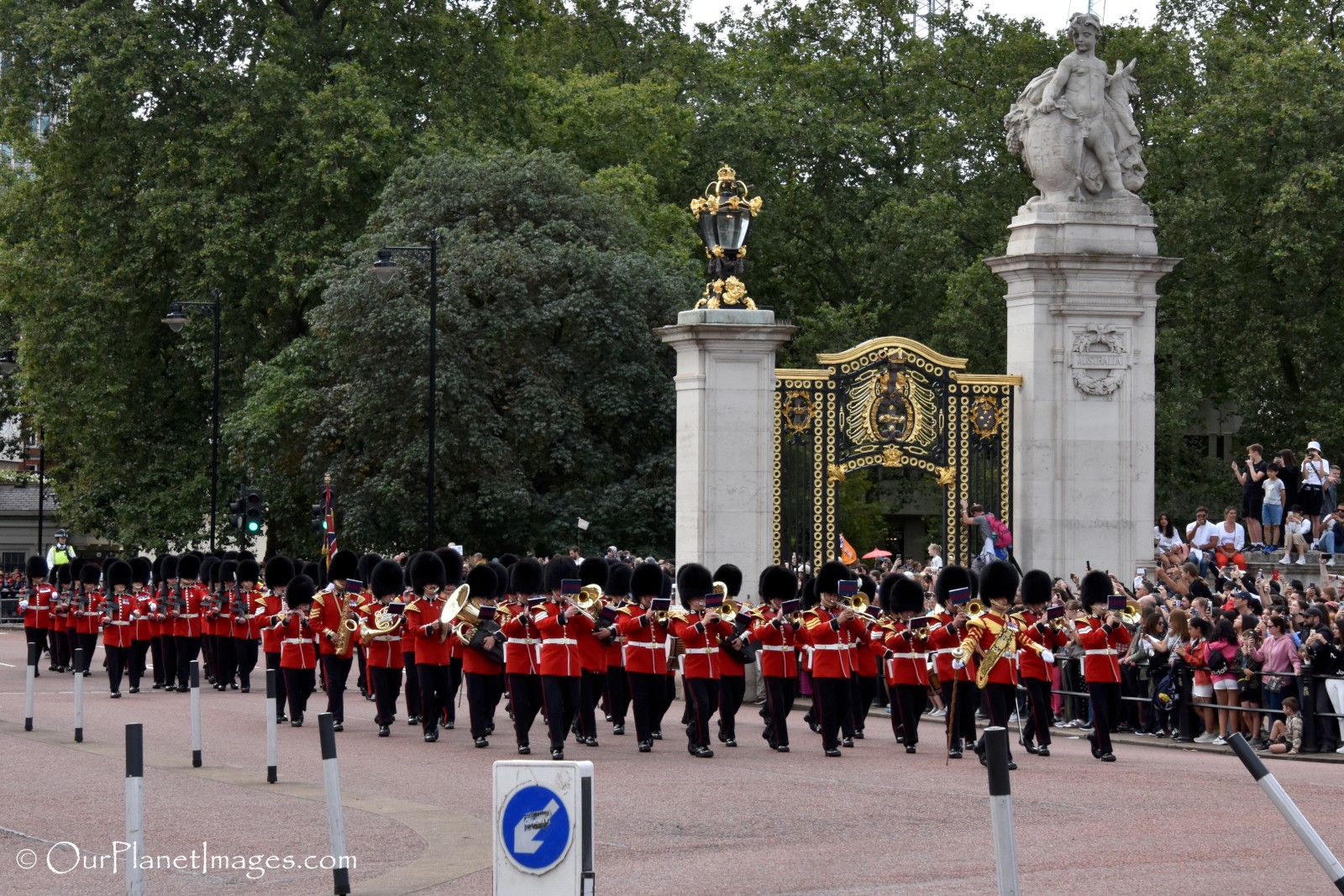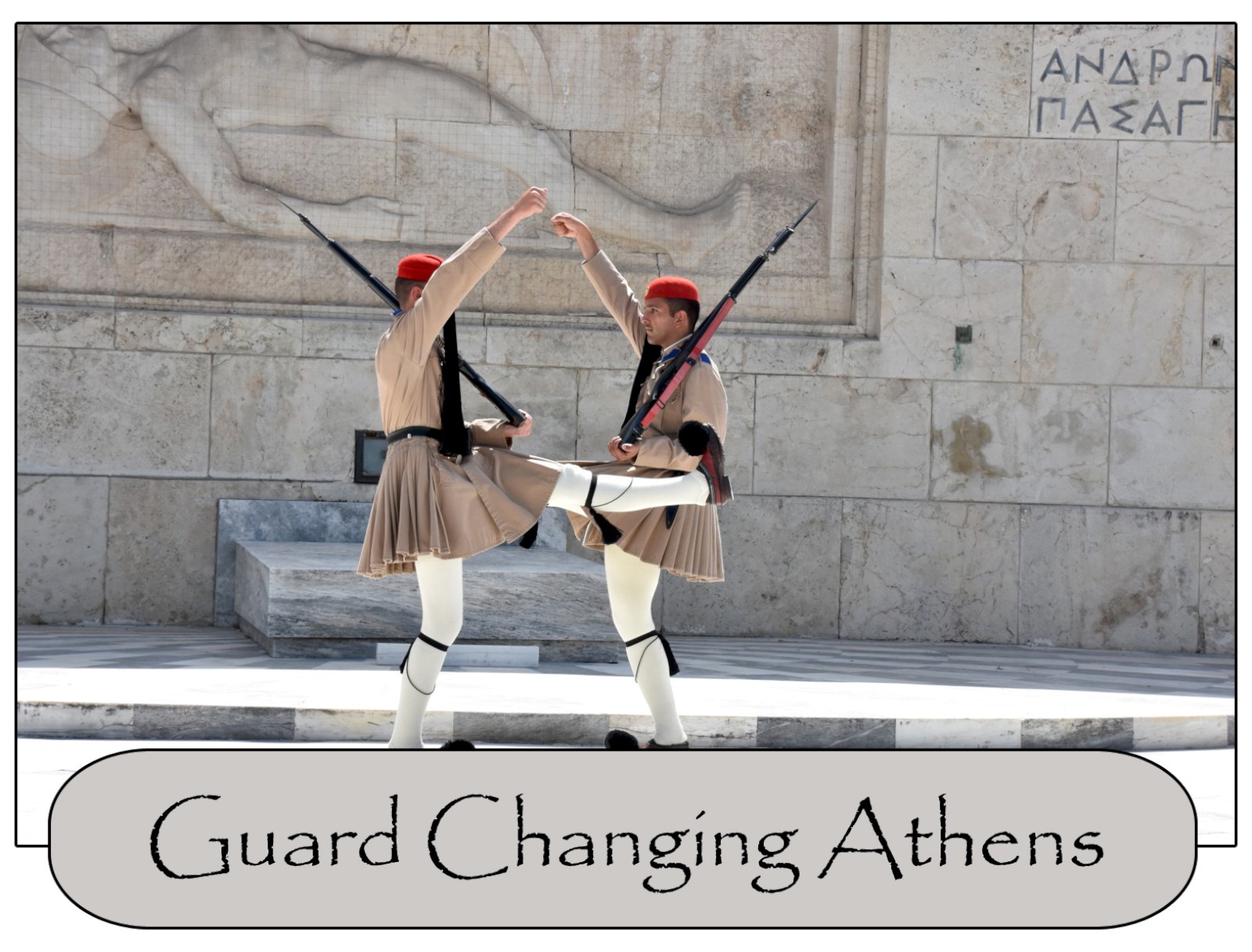The changing of the guard ceremony at Buckingham Palace is undisputedly the most famous Changing of the Guard ceremony in the world.
Permanent Royal Bodyguards have been responsible for guarding the King or Queen since 1656 but the changing of the guard ceremony at Buckingham Palace didn’t start until 1837 after Queen Victoria moved to Buckingham Palace.
Contrasting with other changing of the guard ceremonies, the changing of the guard ceremony at Buckingham Palace actually involves three separate location as opposed to one location for the other guard changing ceremonies. These locations are of course, Buckingham Palace but also St. James Palace and Wellington Barracks.
The ceremony basics
At 10:30 AM, the King’s Guards stationed at St. James Palace are assembled in the forecourt of St. James’s Palace and inspected. A portion of the guards are led to Buckingham Palace by a Band or Corps of Drums. The parade of the band and King’s Guards march from St. James Palace down The Mall (Street) past the Victoria Memorial and into the Buckingham Palace forecourt.
Simultaneously, the King’s Guards at Buckingham Palace are assembled in the palace forecourt and inspected. When guards from St. James Palace arrive, they take position beside the Buckingham Palace guards and wait for the arrival of the new guards from Wellington Barracks.
The new guards are inspected in front of Wellington Barracks then they are led by the band past Victoria Memorial into the Buckingham Palace forecourt at 11:00 AM. A lot of pageantry is conducted in the process of swapping out the old guards with the new guards. This exhibition lasts for about 30 minutes before the ceremony is complete.
The a portion of the new guards stay at Buckingham Palace and some march accompanied with the band along The Mall to St. James Palace where they replace the guards that remained on duty. The old guards are led by a band back to Wellington Barracks to rest.
Parade into Buckingham Palace
There are essentially two separate parades that march into Buckingham Palace. The first comes from St. James Palace and the second from Wellington Barracks. Both parades are led by a band and followed by the King’s Guard.
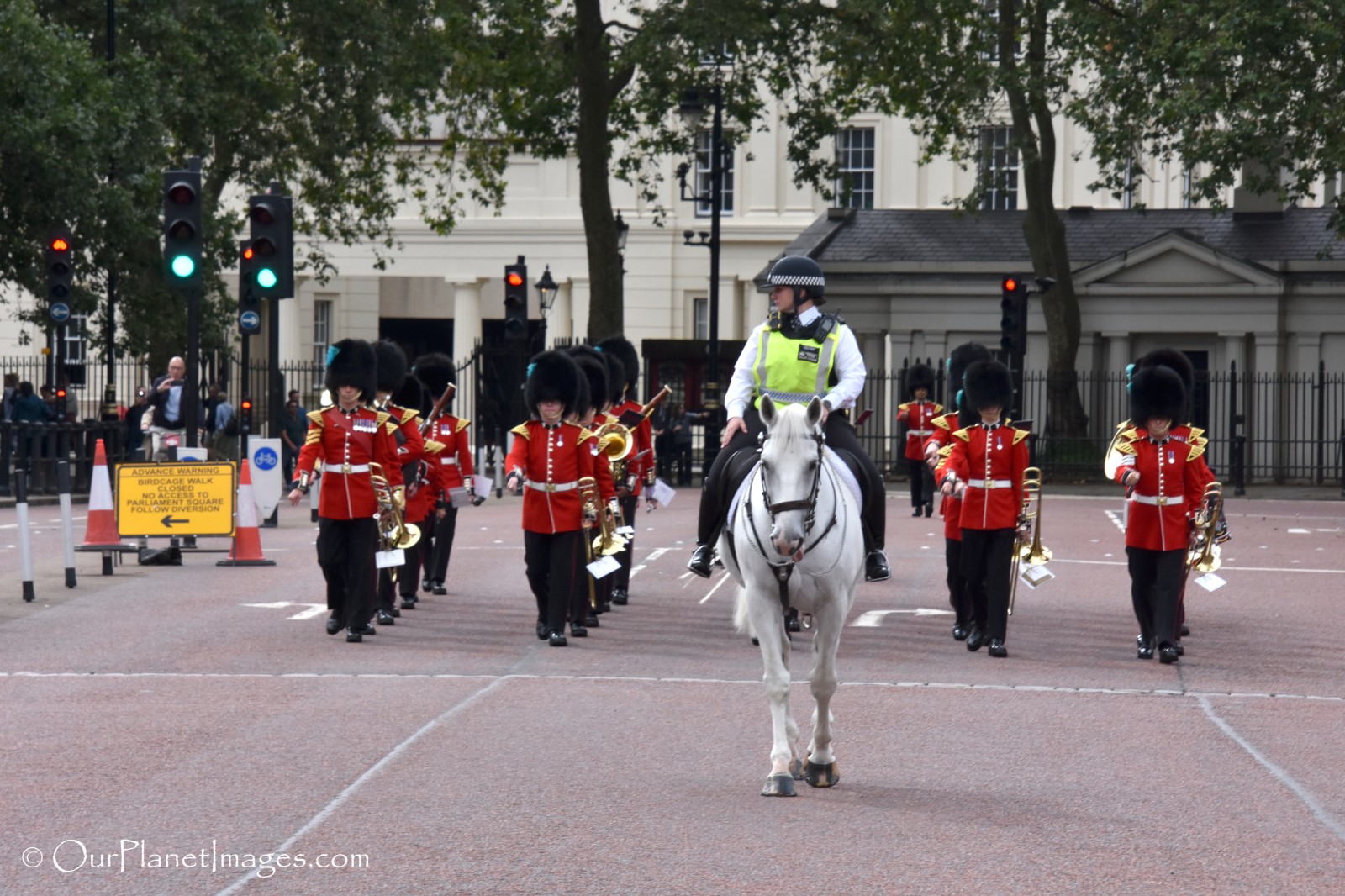
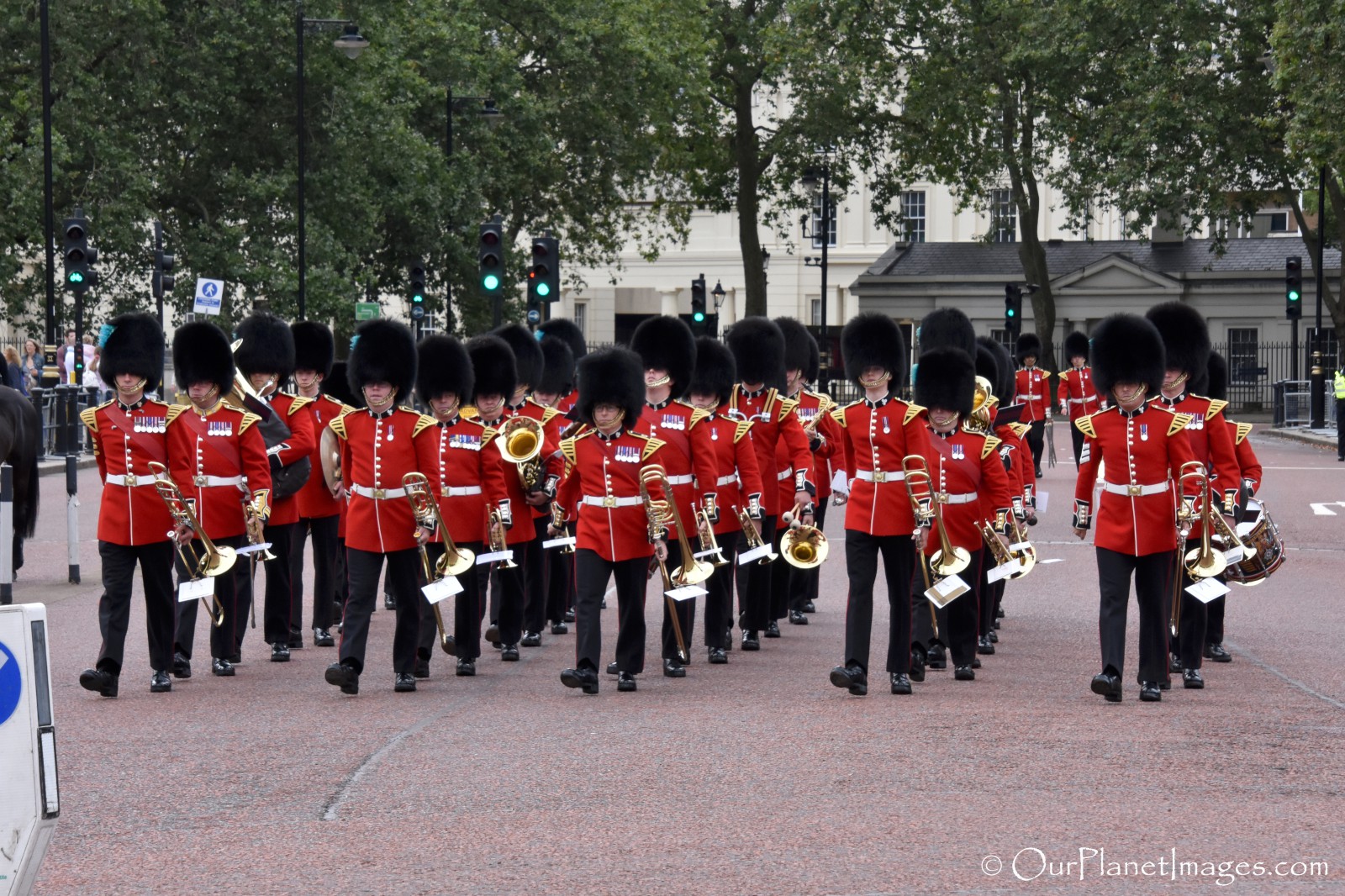
To keep the spectator behind the barrier, the London Mounted Police accompany both sets of the King’s Guards. I have seen a lot of parades and I never understood why they let the horses cross over in front of the marching band but it always spells trouble for someone in the band.
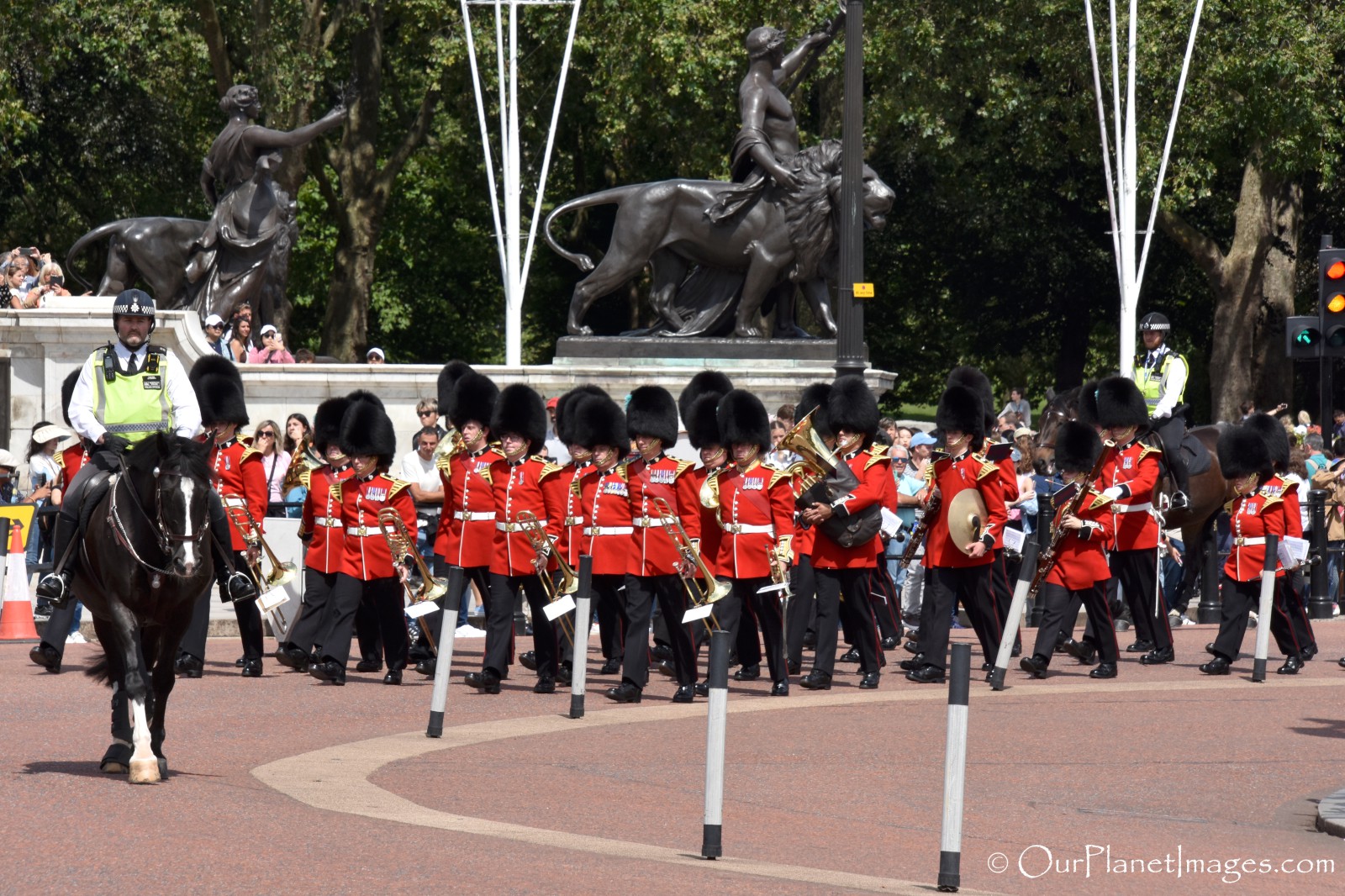
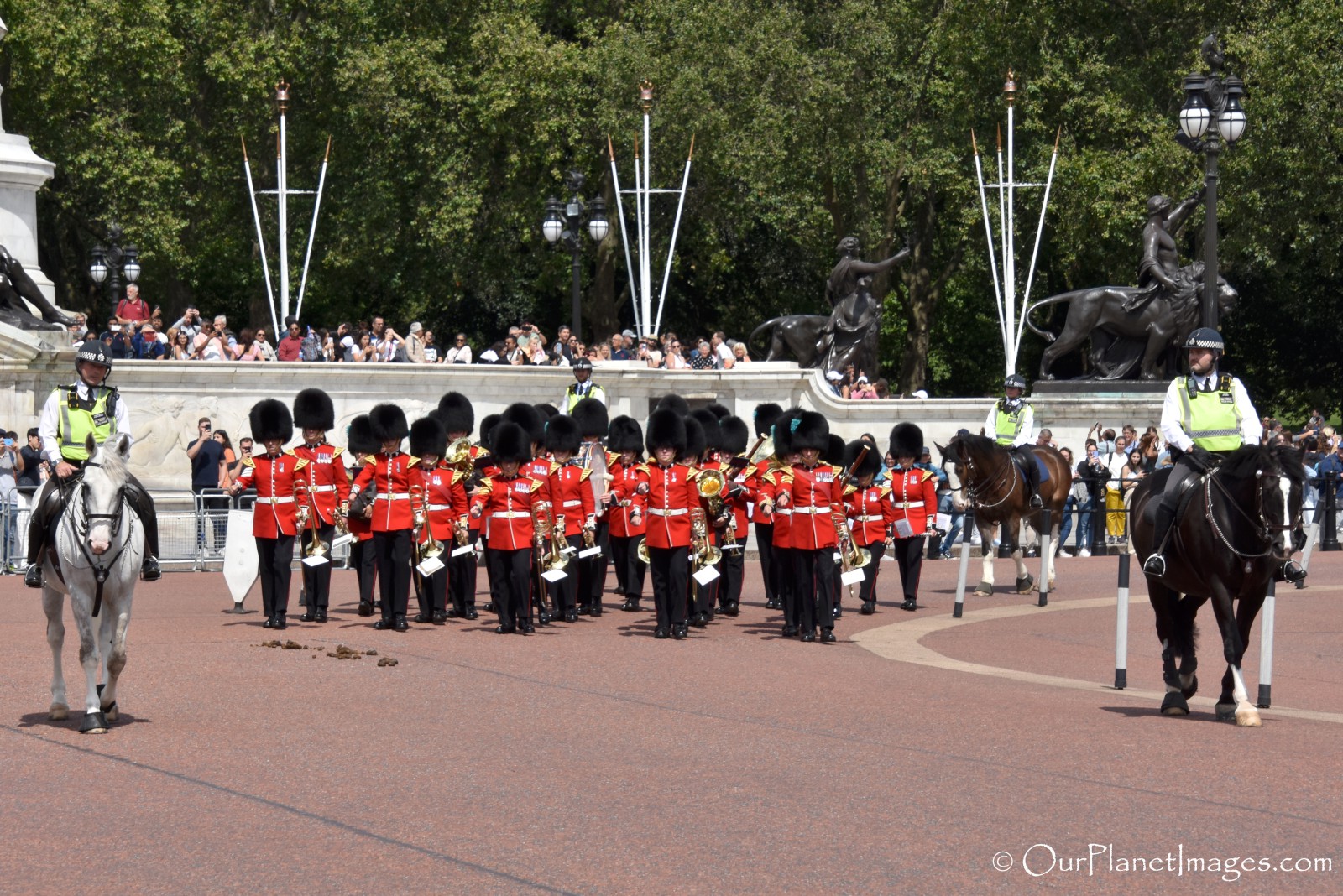
The Band
The military band that accompanies the King’s Guard typically wears the scarlet tunics and bearskin caps similar to the King’s Guards. During the ceremony the band plays traditional pieces but they will also play pop music and show tunes.
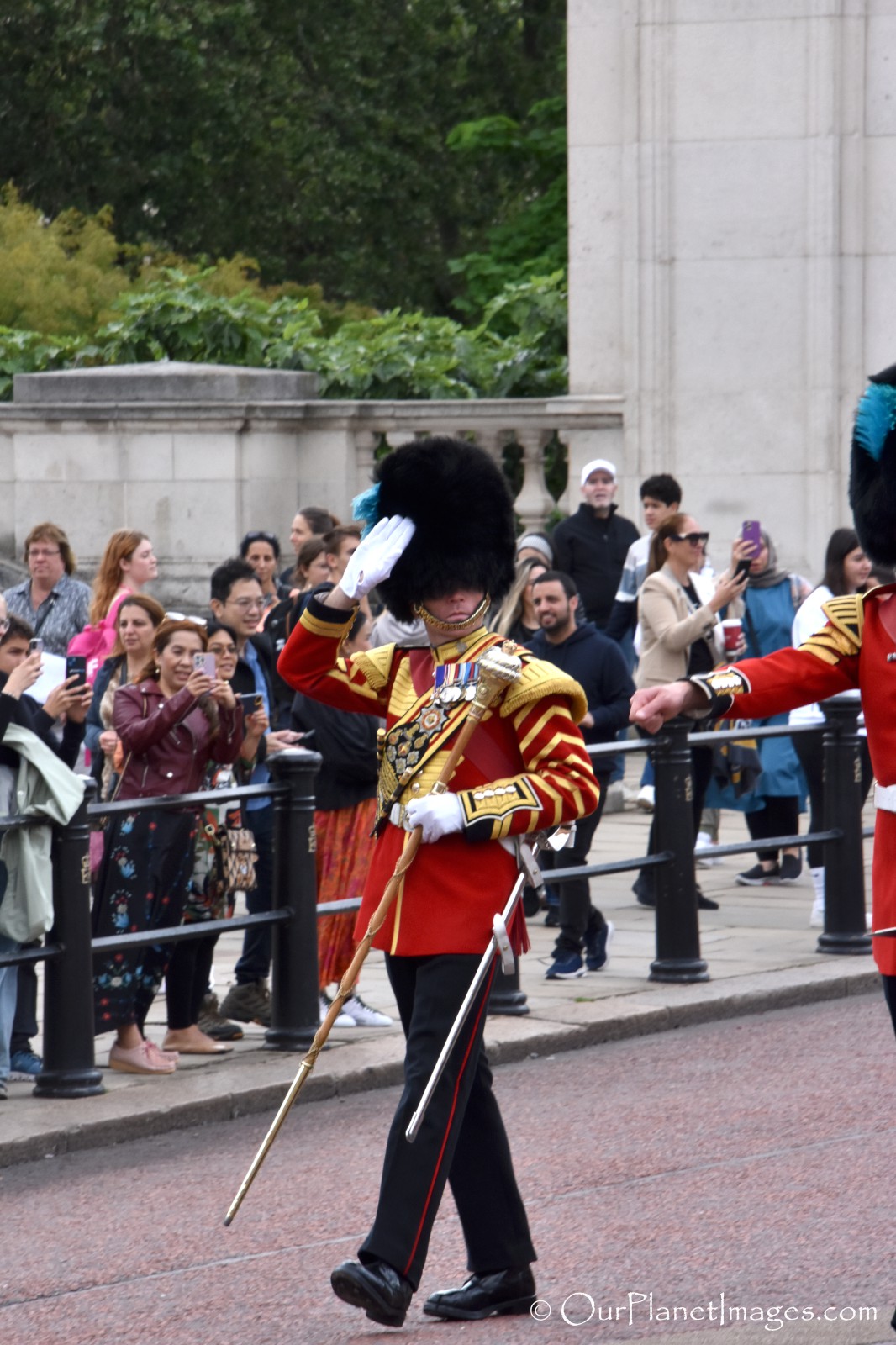
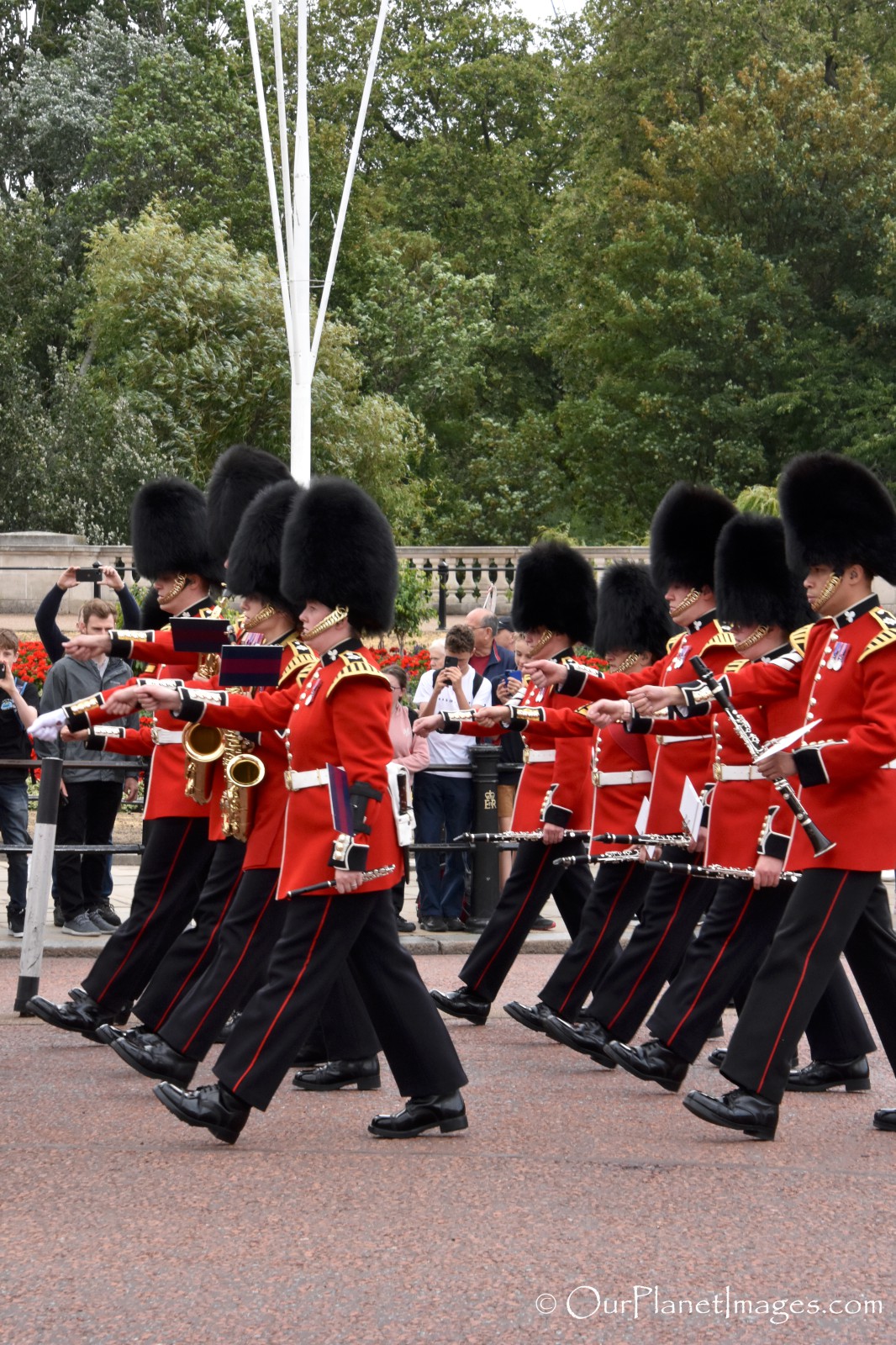
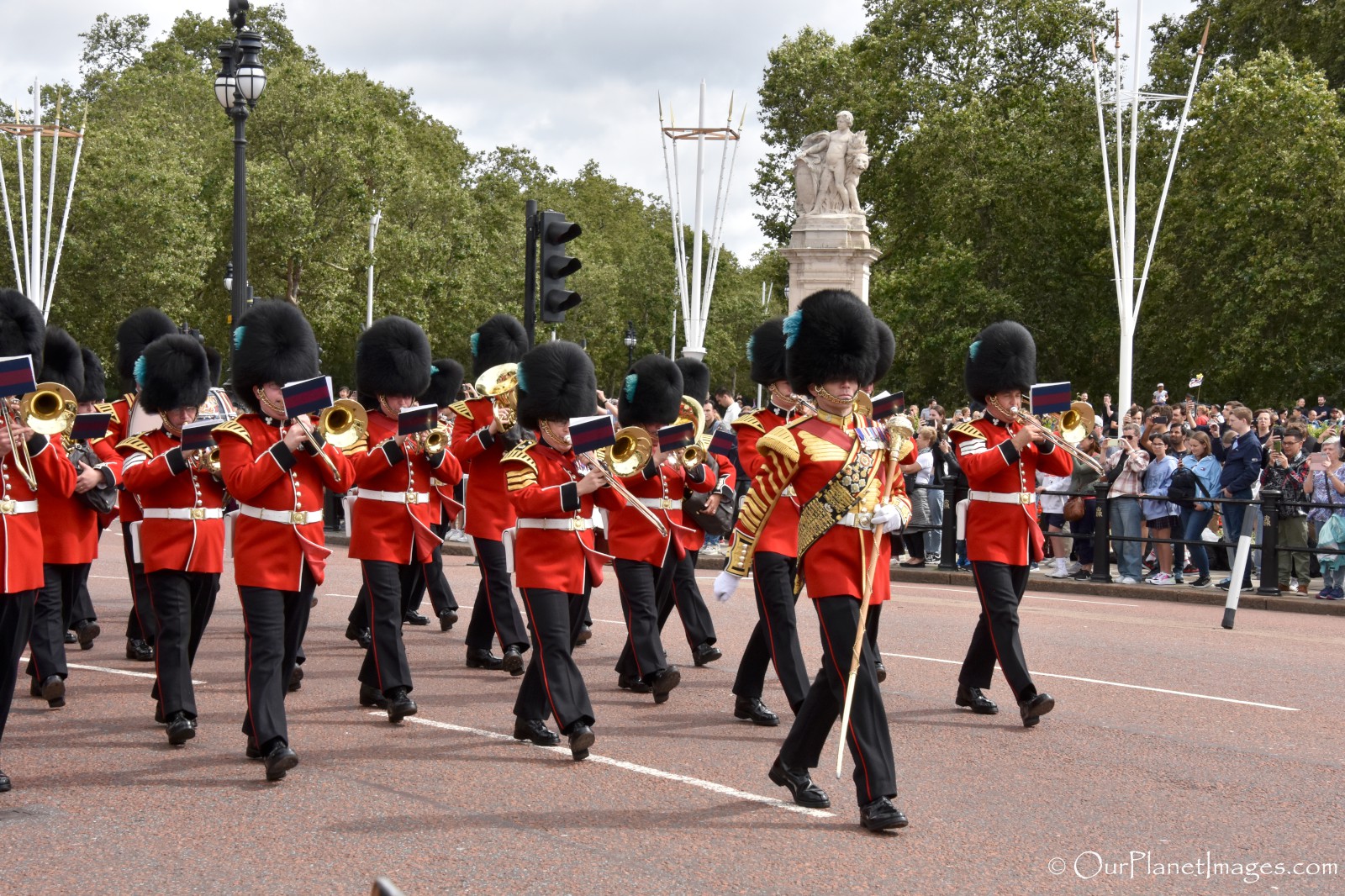
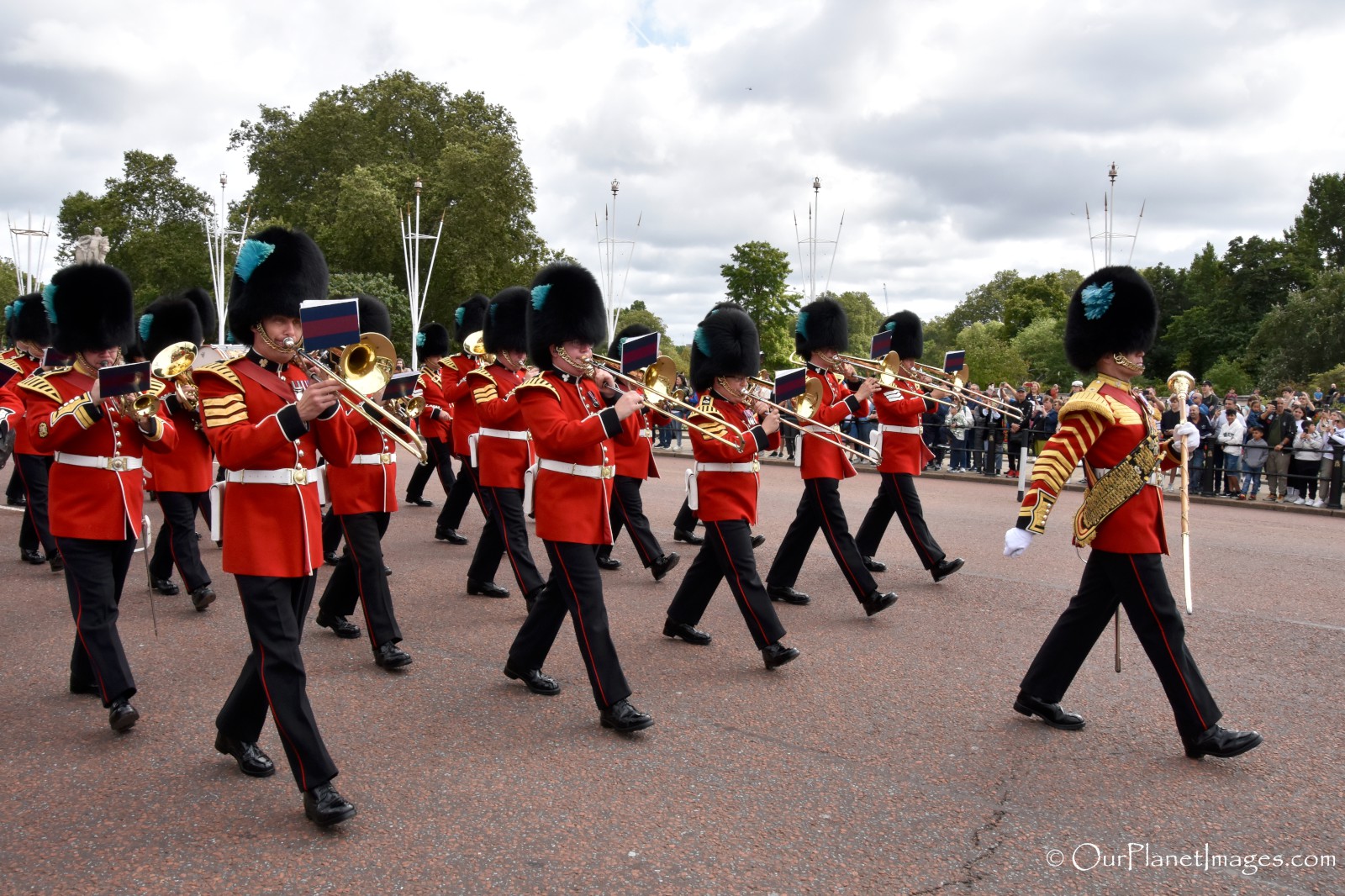
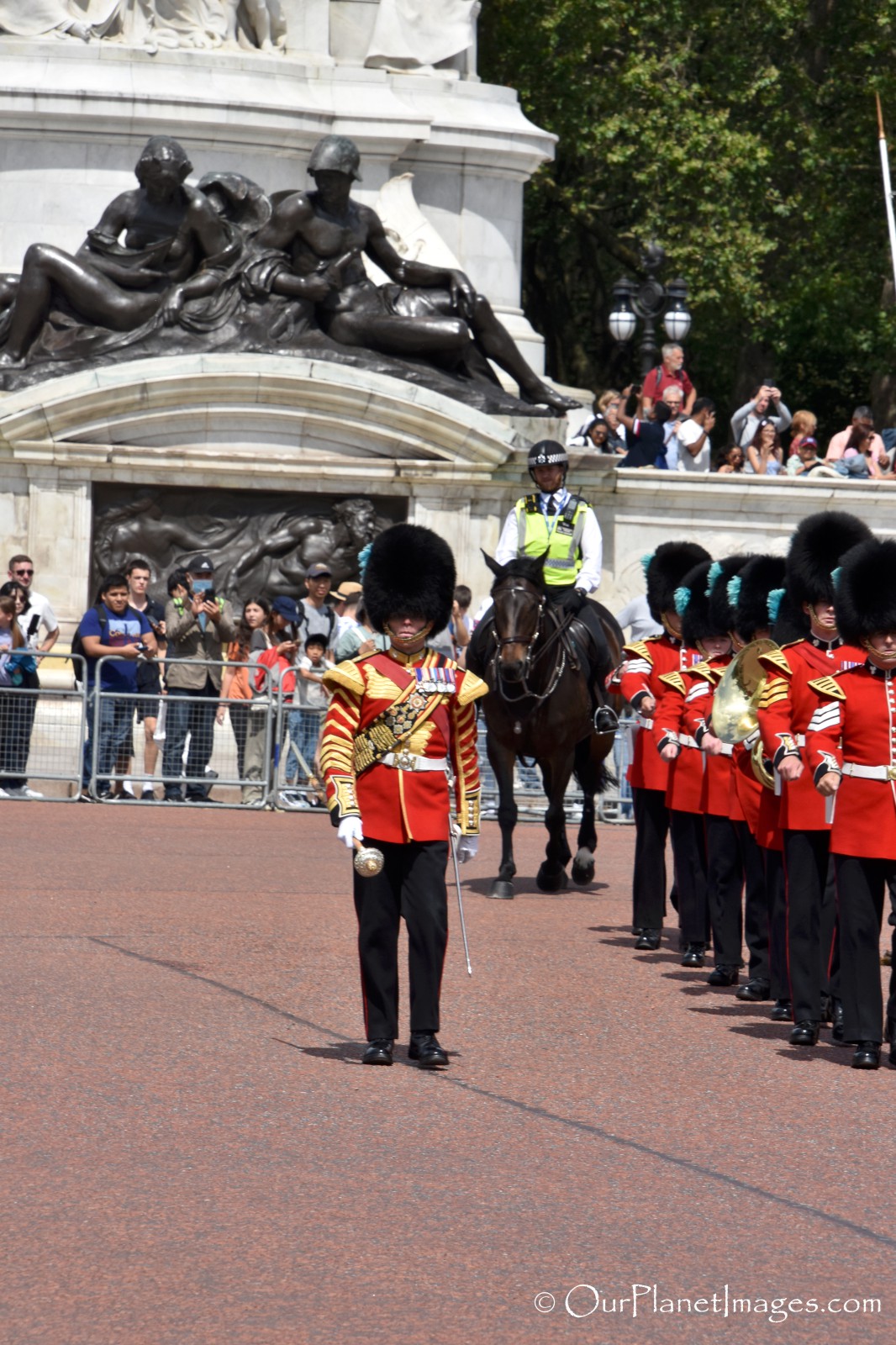
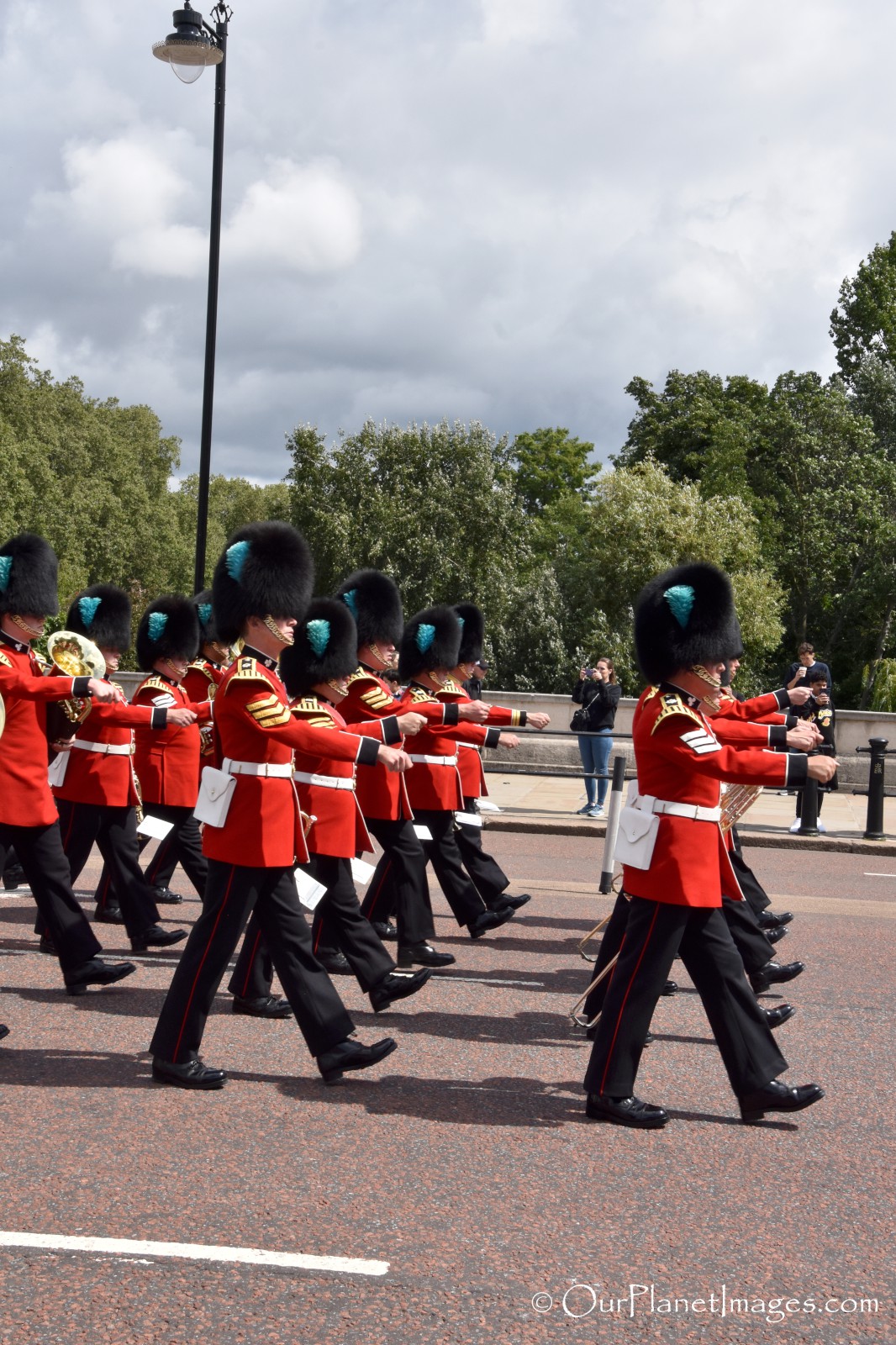
The King’s Guard
The King’s Guard following behind the band is fully prepared for duty. Each guard carries the British Army’s standard combat weapon with a 30 round magazine and a bayonet mounted on the end.
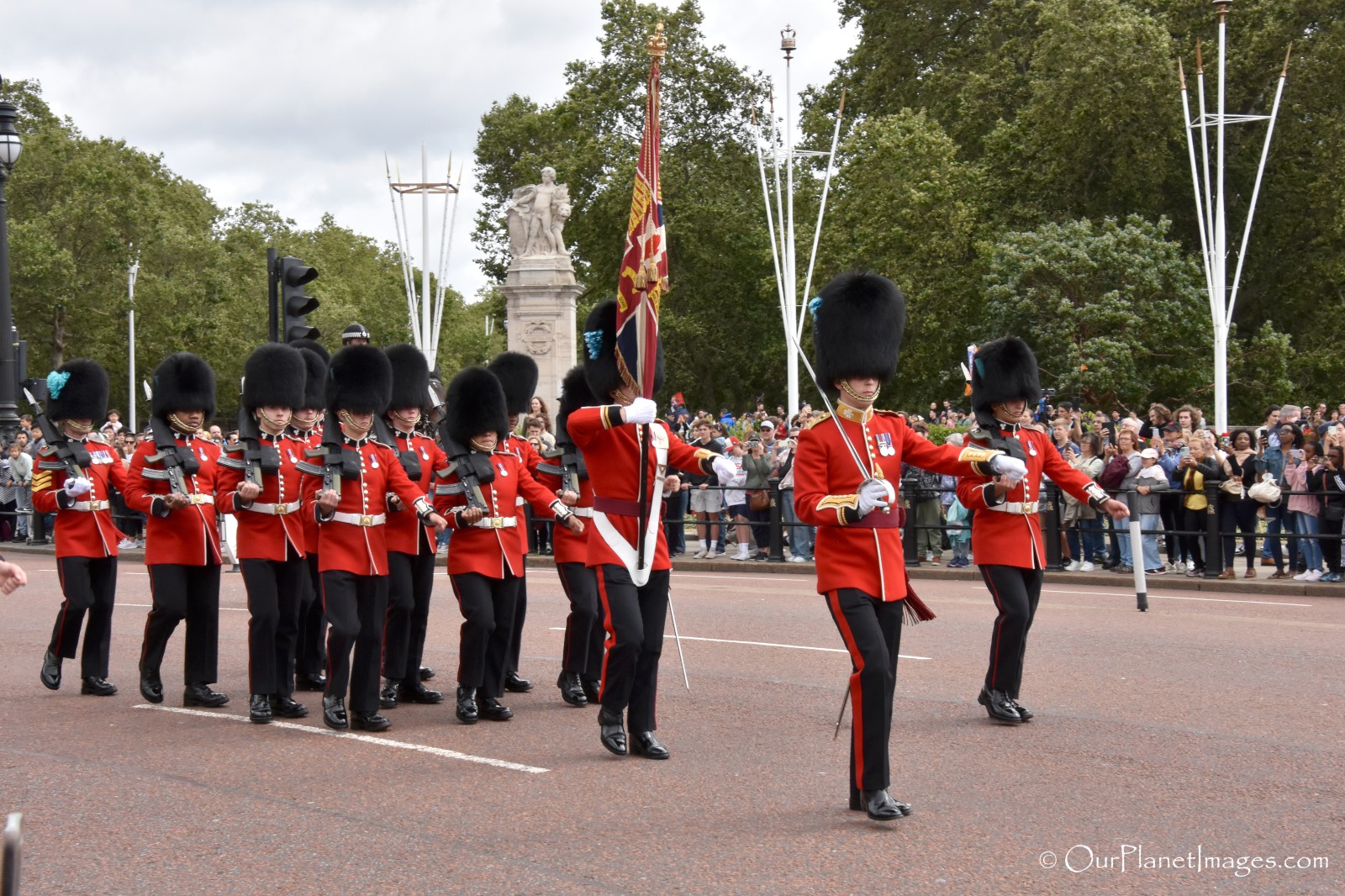
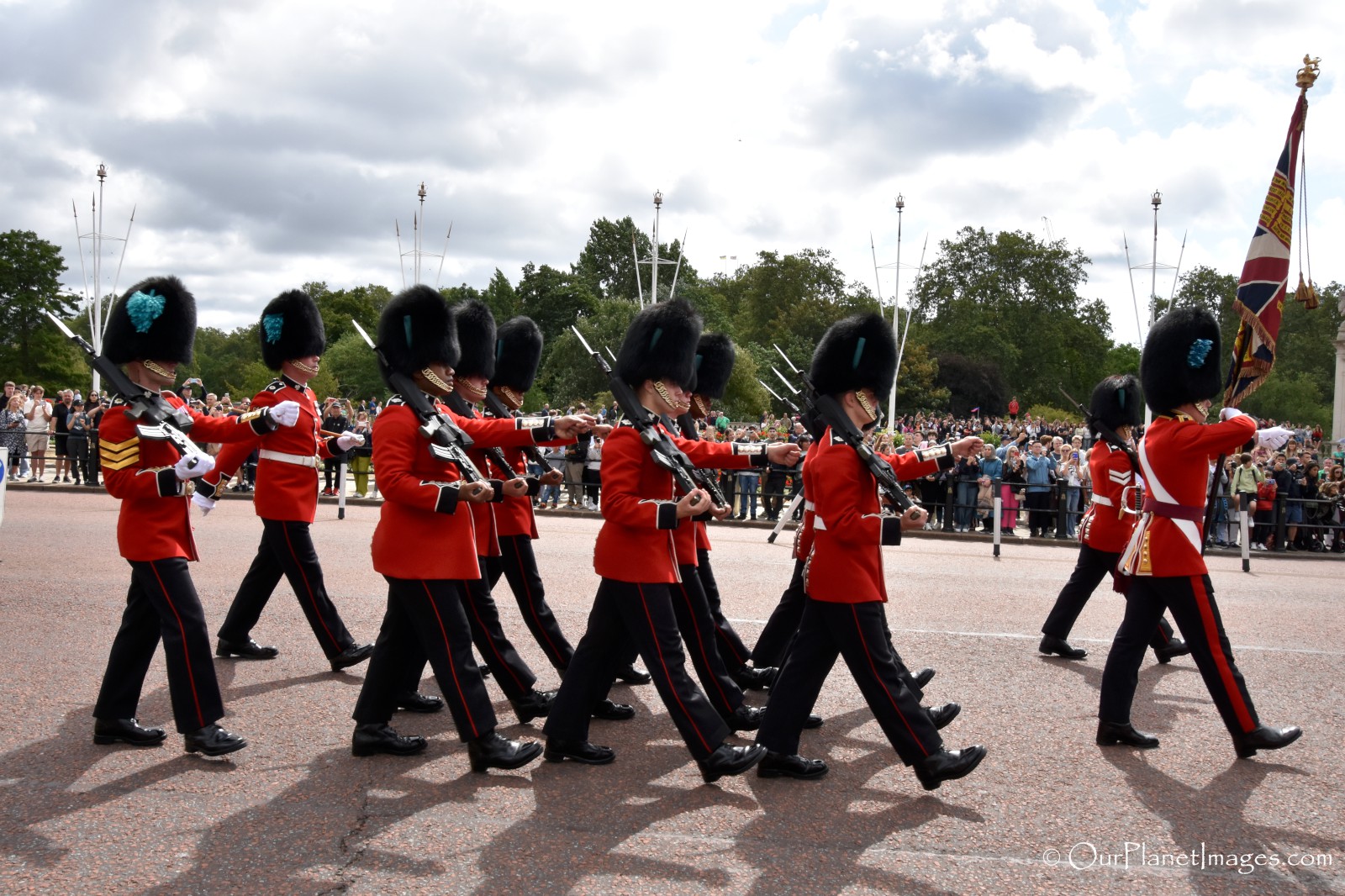
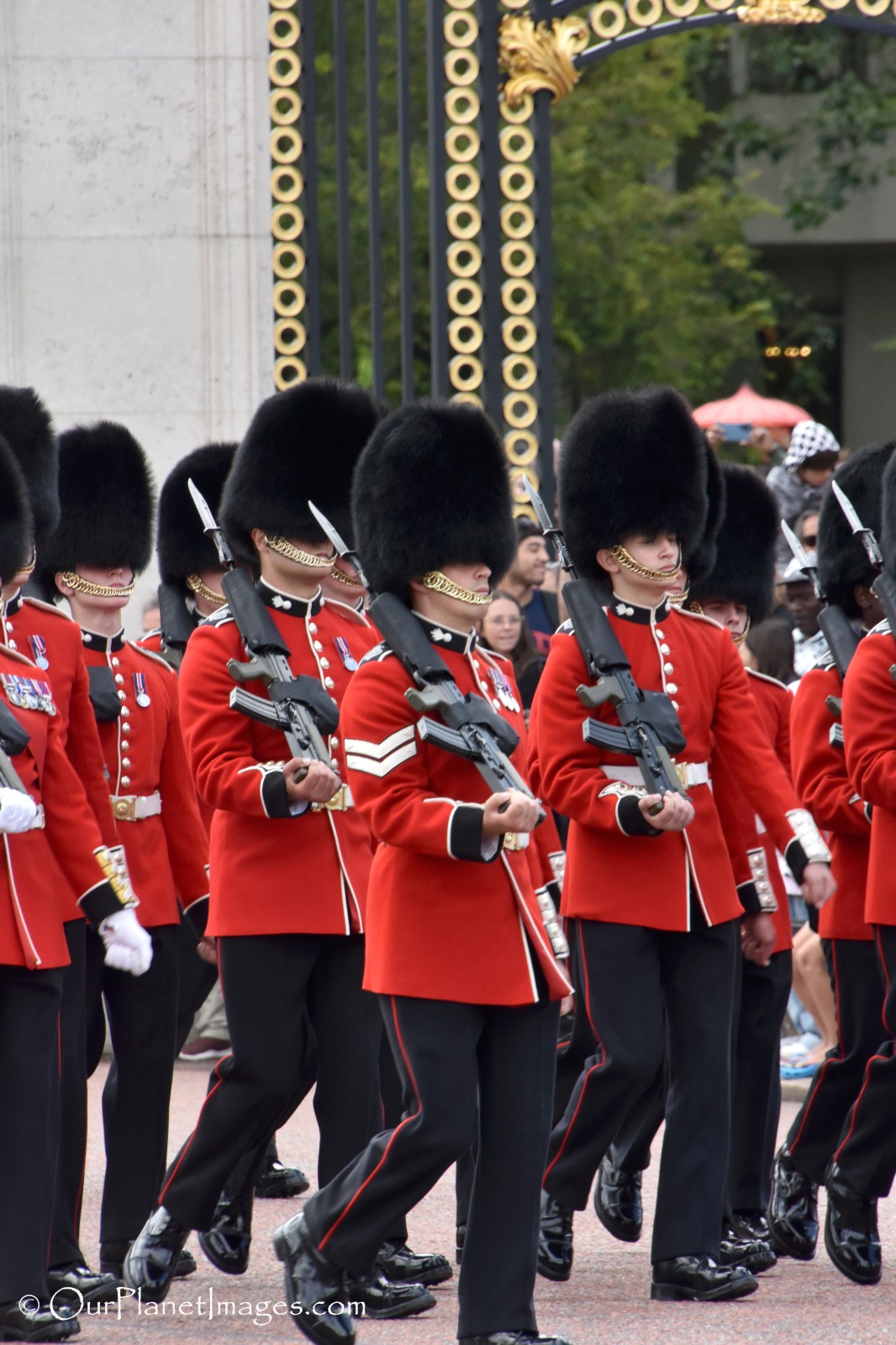
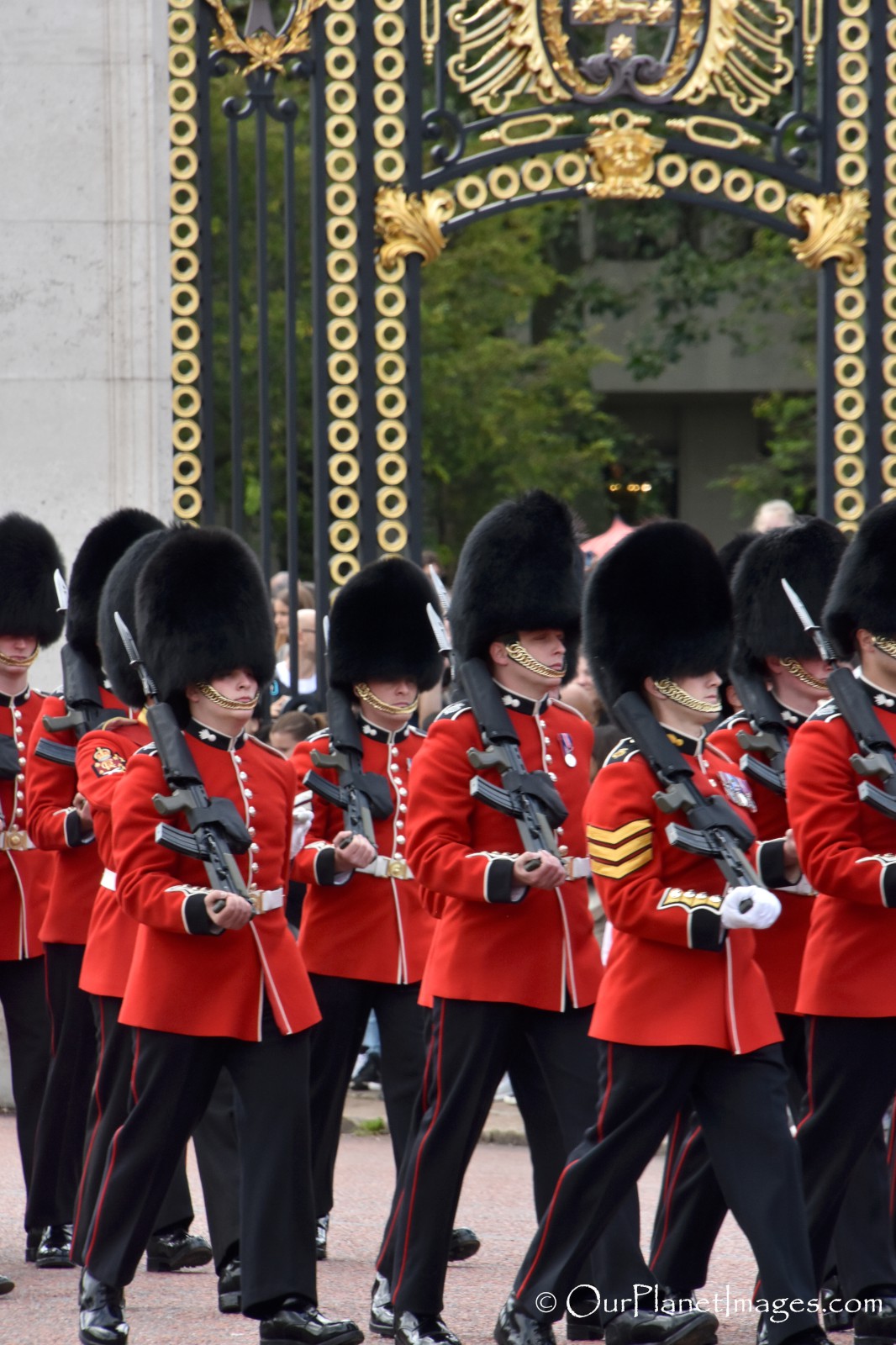

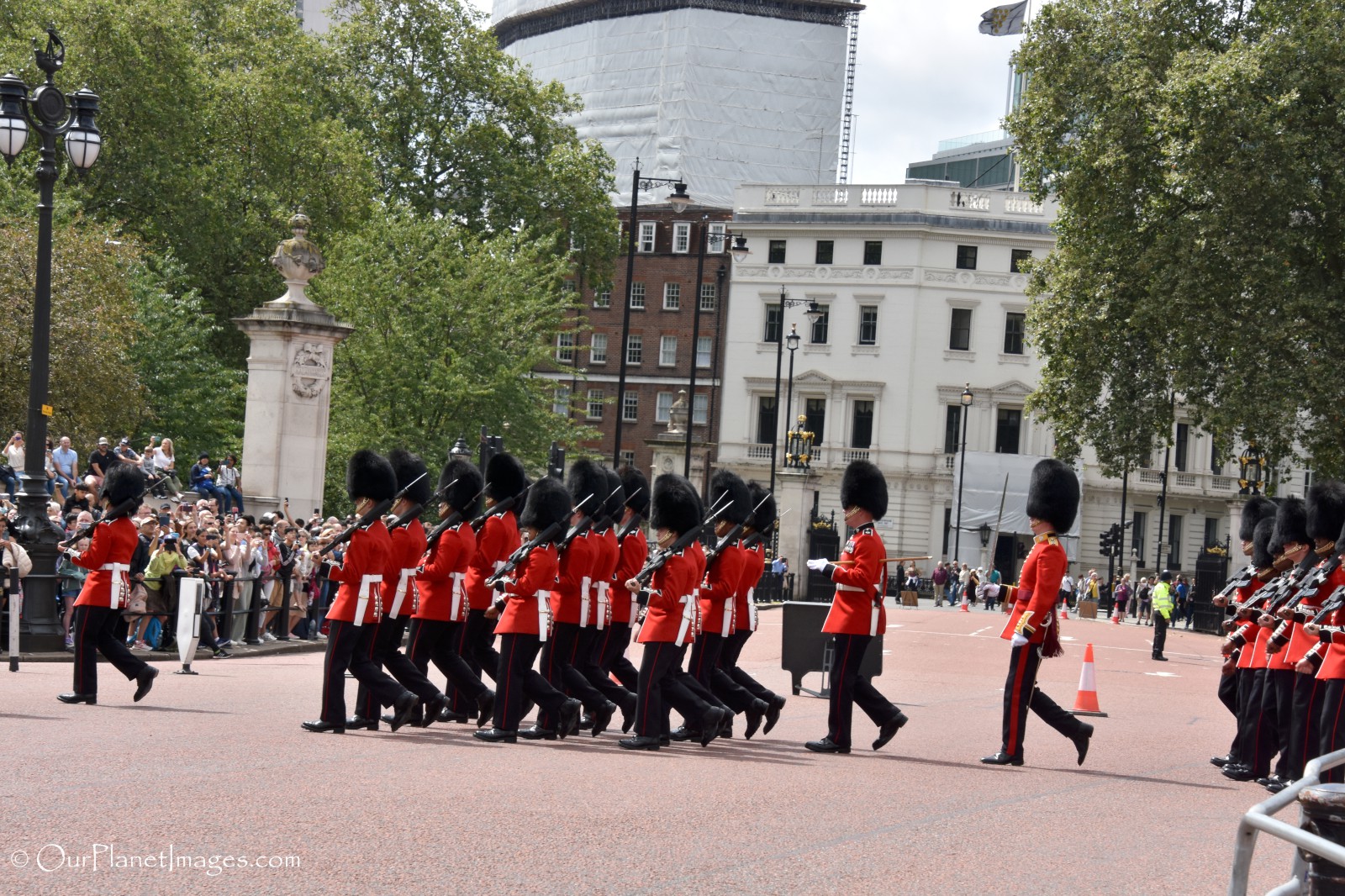
The guards on duty
The guards on duty don’t stand at their post motionless for hours. They are active as they routinely patrol in front for their guard post and then reassume their designated location.
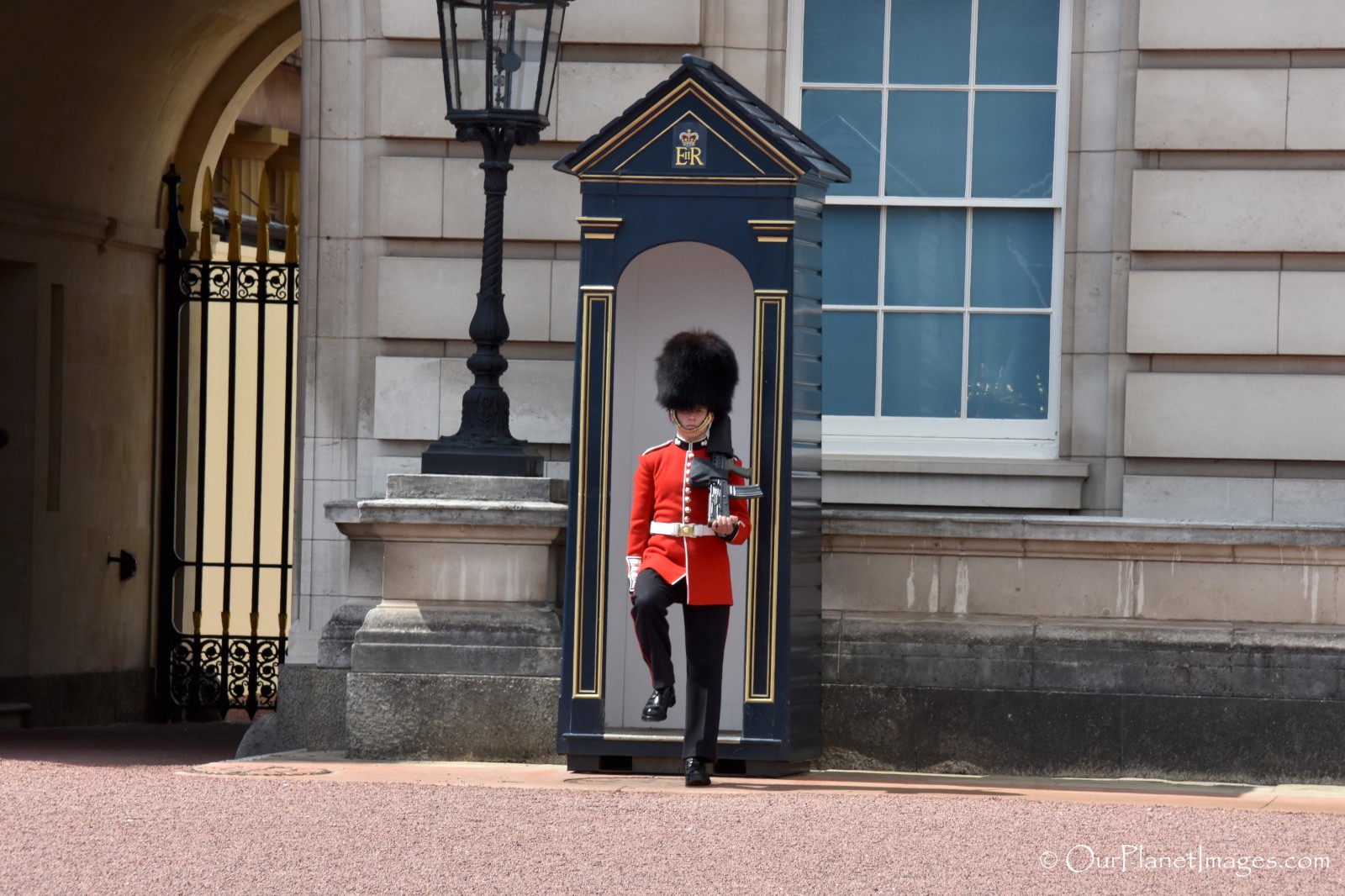
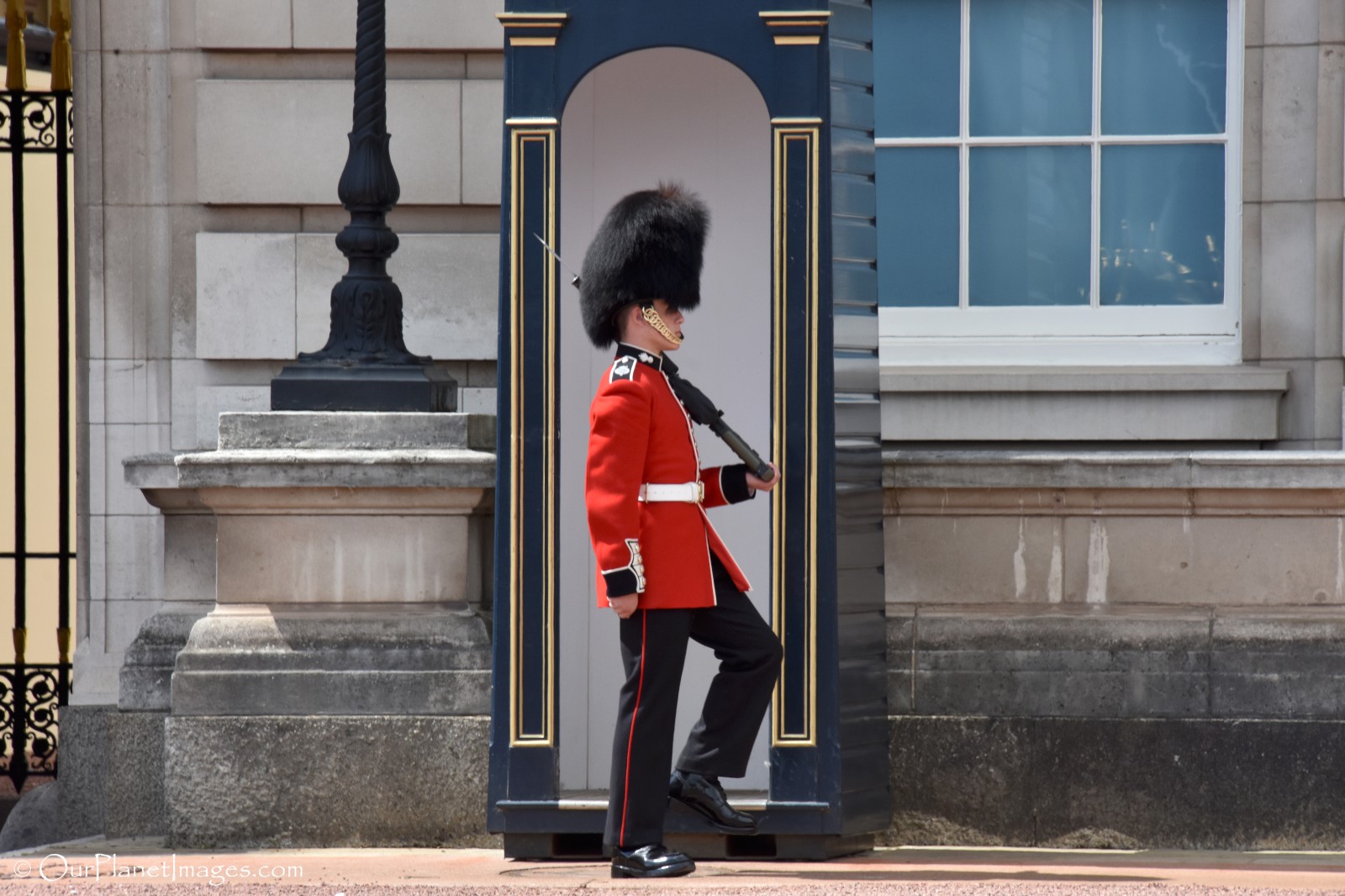
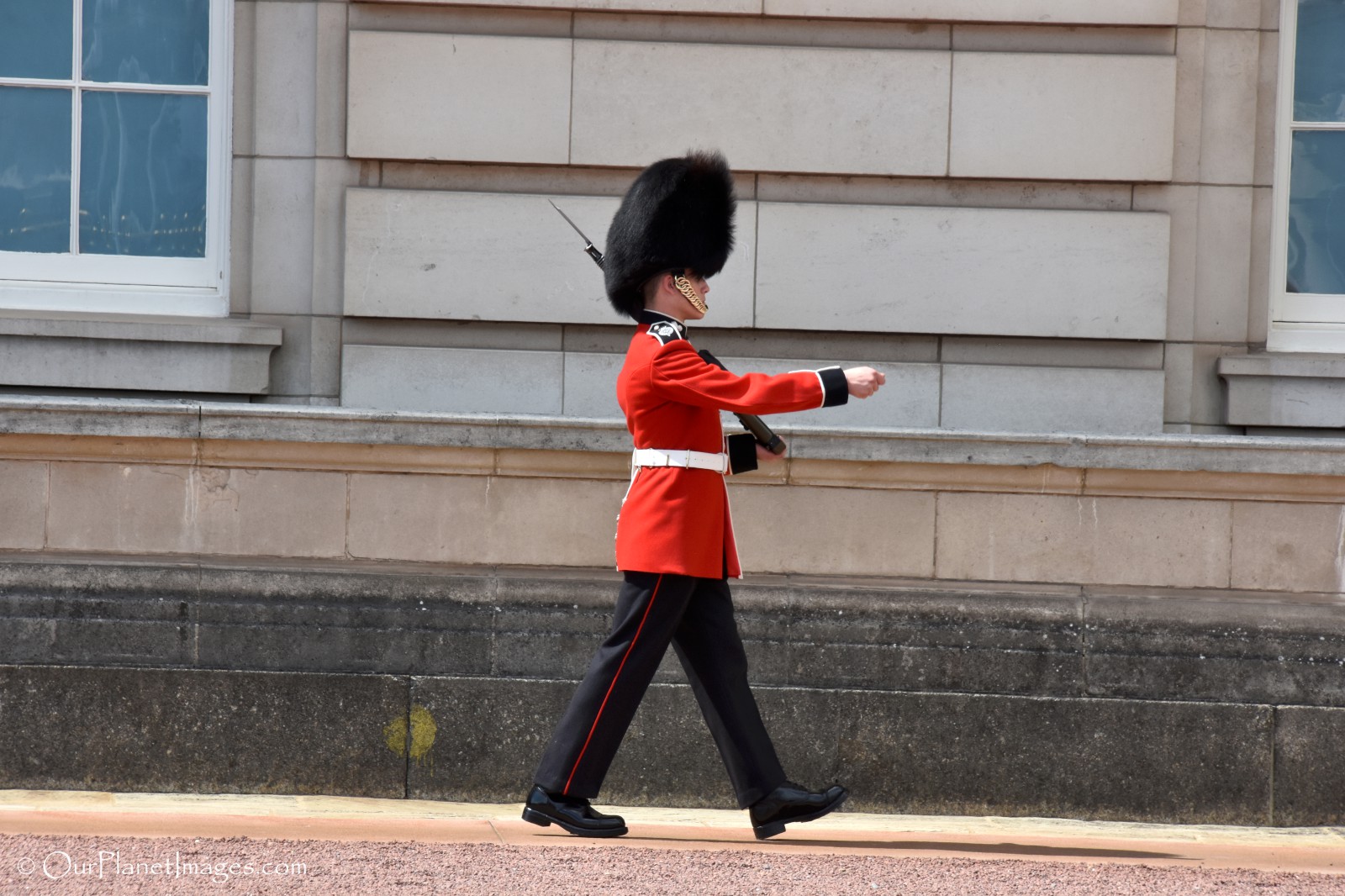
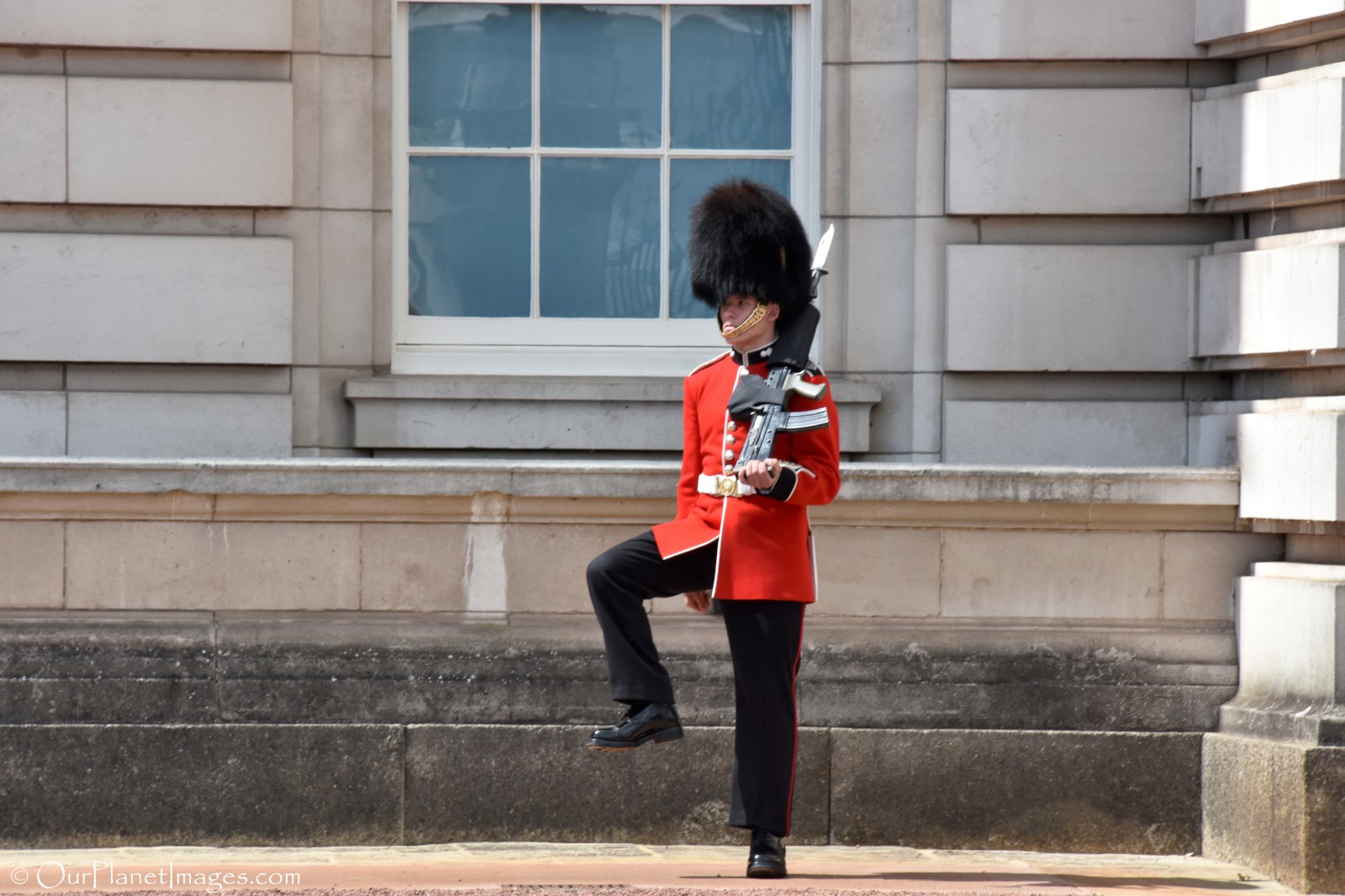
Periodically, other King’s Guards will visit the guards on duty. The purpose of these visits were not obvious to me but it did not last long and then they left leaving the guard on duty to continue guarding the post.
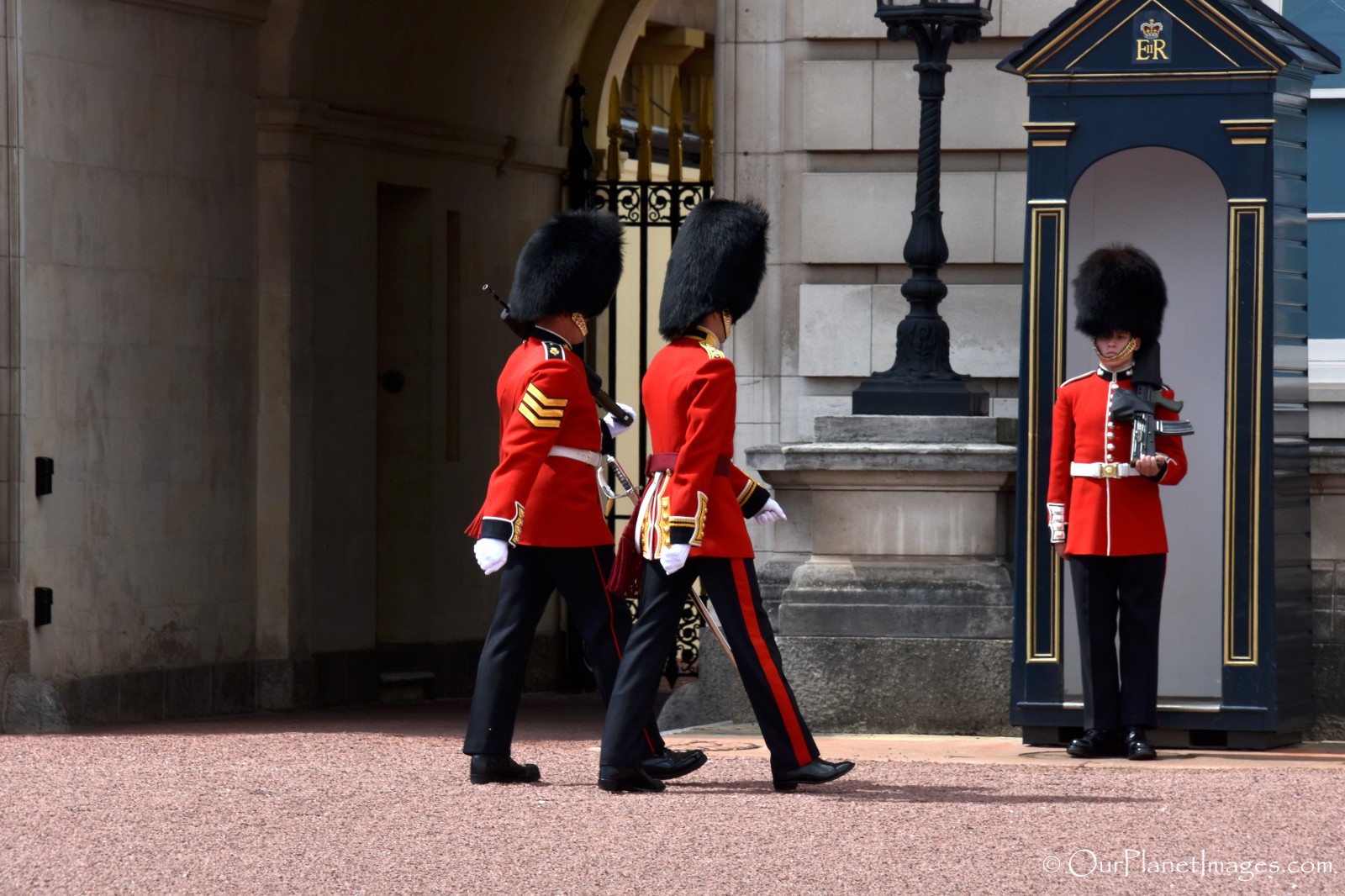
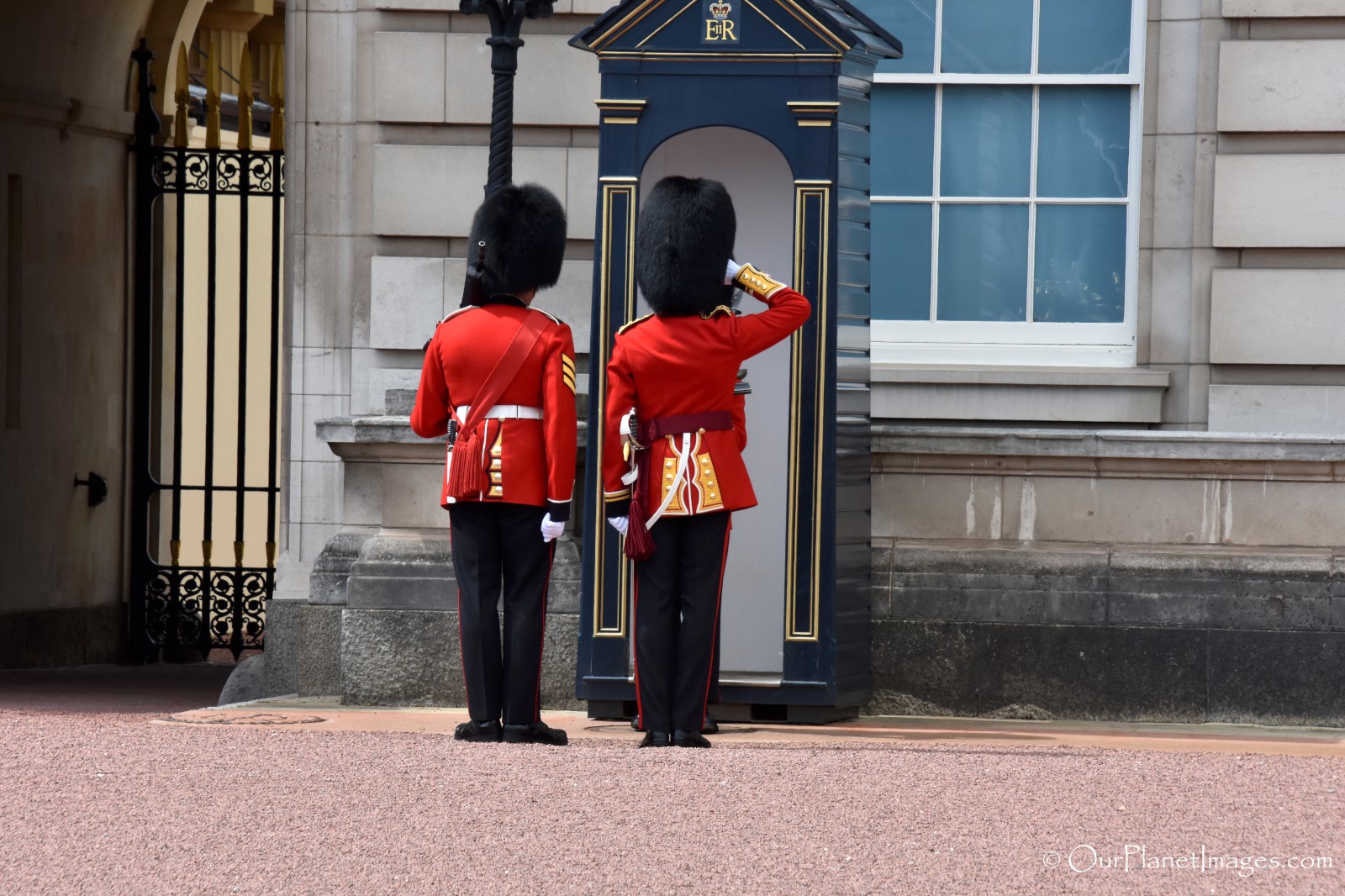
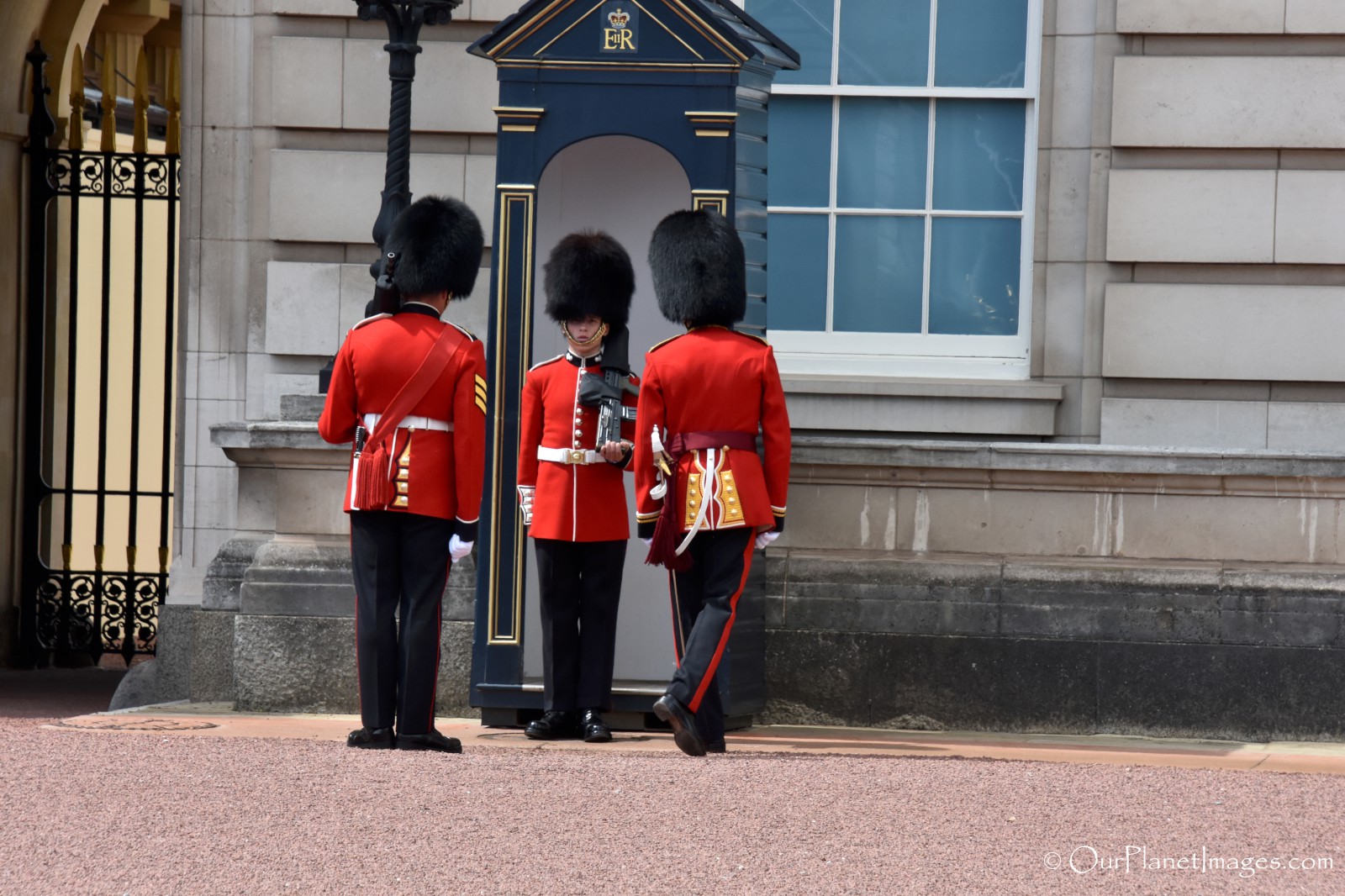
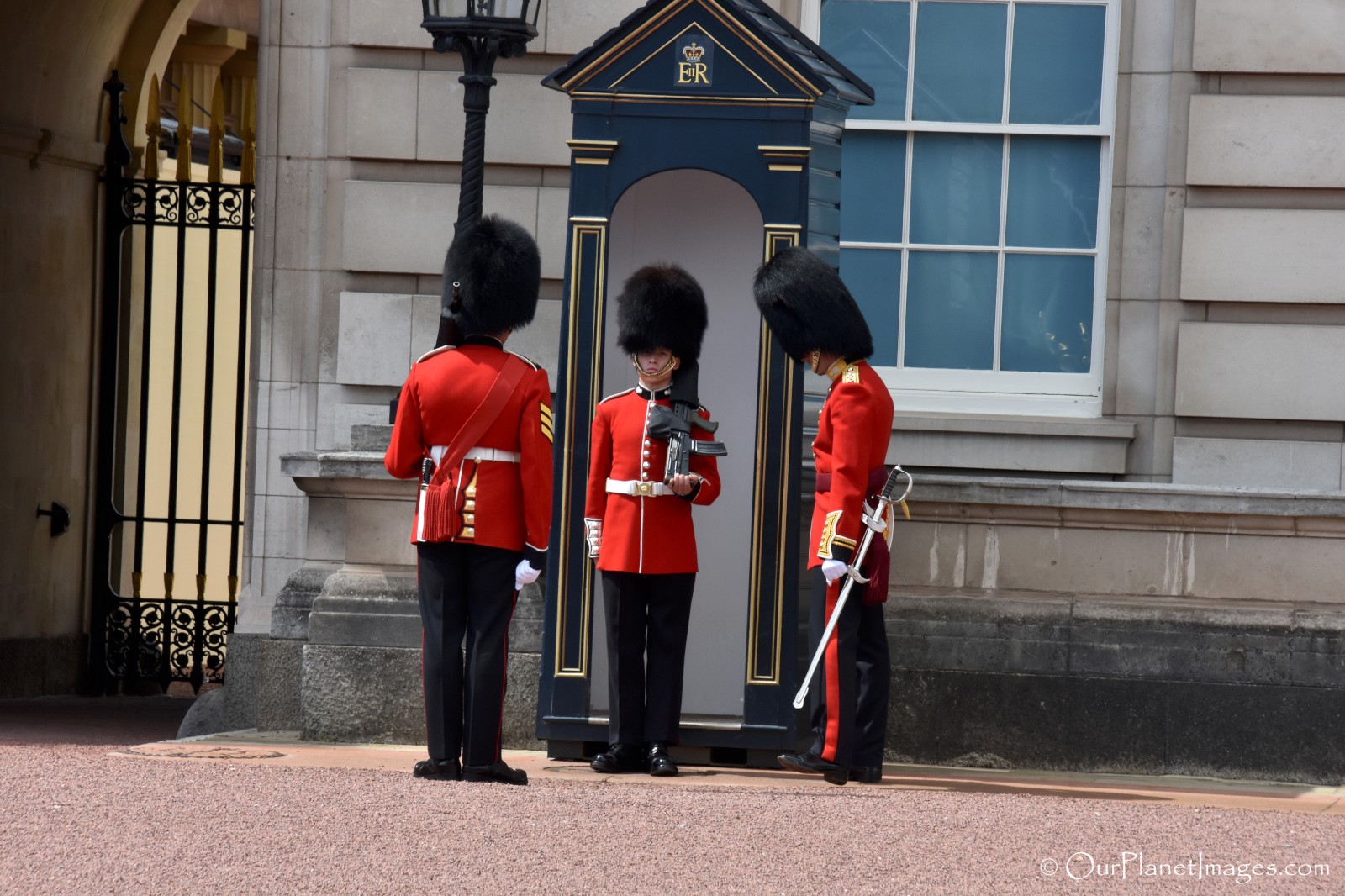
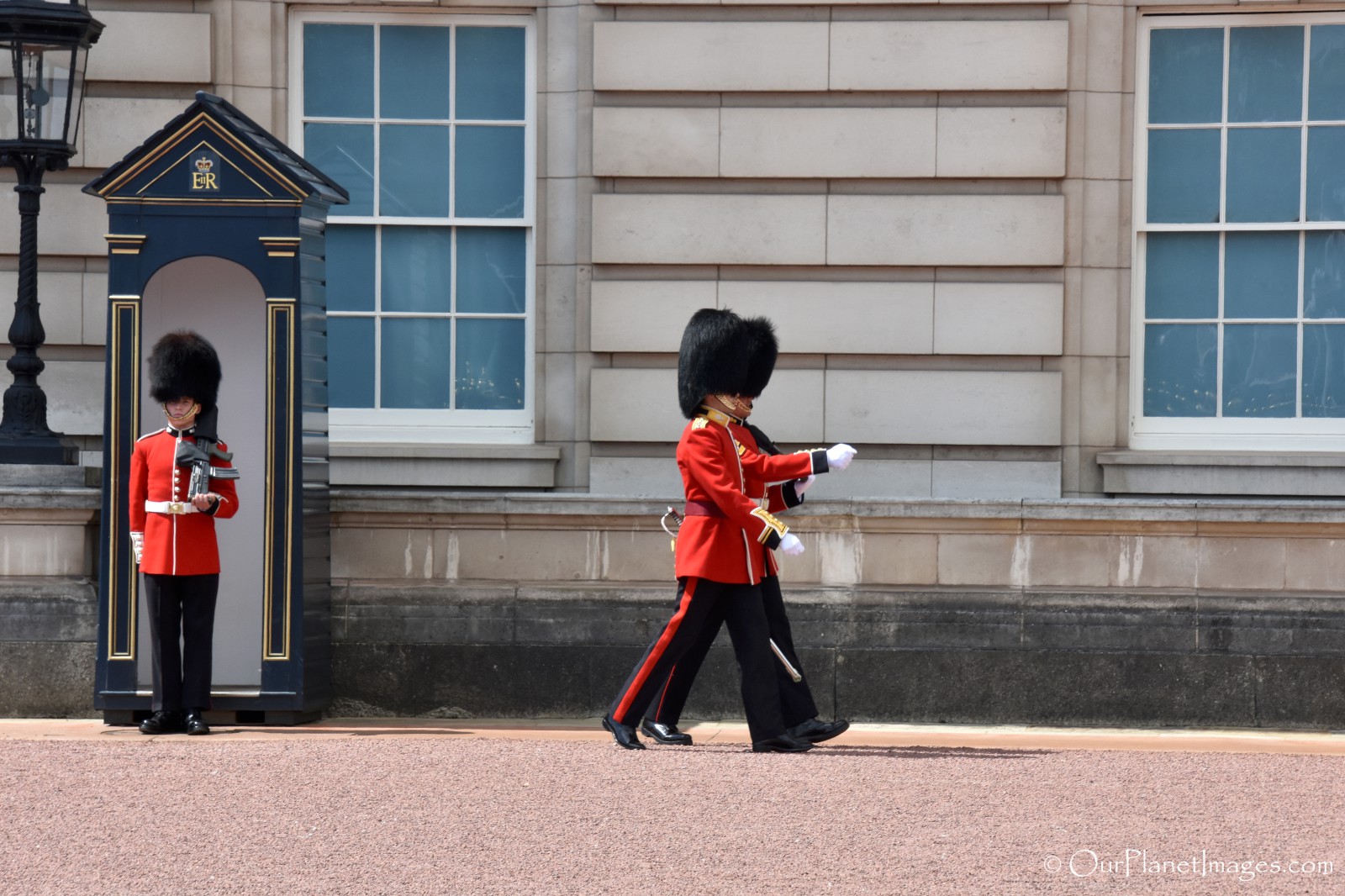
Who are the King’s Guards?
The King’s Guard is the name given to the soldiers responsible for protection of the official royal residences in the United Kingdom. The King’s Guard is based in London and provides soldiers outside Buckingham Palace, St. James’s Palace, Clarence House, the Tower of London, Windsor Castle and occasionally at Holyrood House in Edinburgh, Scotland.
All of the King’s Guards are active serving soldiers that are members of the infantry division of the British Army, however there are separate regiments which are:
- Grenadier Guards – Founded in 1656, this is the most senior regiment of the Guard’s division.
- Coldstream Guards – Founded in 1650, this is the oldest part of the Guards Division and is the oldest regiment of the British Army to be in active service.
- Scots Guards – Incorporated into the British Army in 1686, the Scot’s Guards originally began as bodyguards of King Charles I of England and Scotland.
- Irish Guards – Founded in 1900, this is one of only two Irish Infantry regiments remaining in the British Army.
- Welsh Guards – Active since 1915, this is the newest regiment of the Guards Division.
The Guards Uniforms
The overall uniforms of the King’s Guard is standard but there are subtle differences in the details of the uniforms depending on which regiment the soldier belong. This means that it is possible to determine which regiment of soldiers are performing the ceremony based on these small differences. The differences are described below with a photo showing the uniform of each regiment.
Grenadier Guards – Buttons on the tunic are equally spaced, their collar has a grenade design on it and the plume in their hat is white.
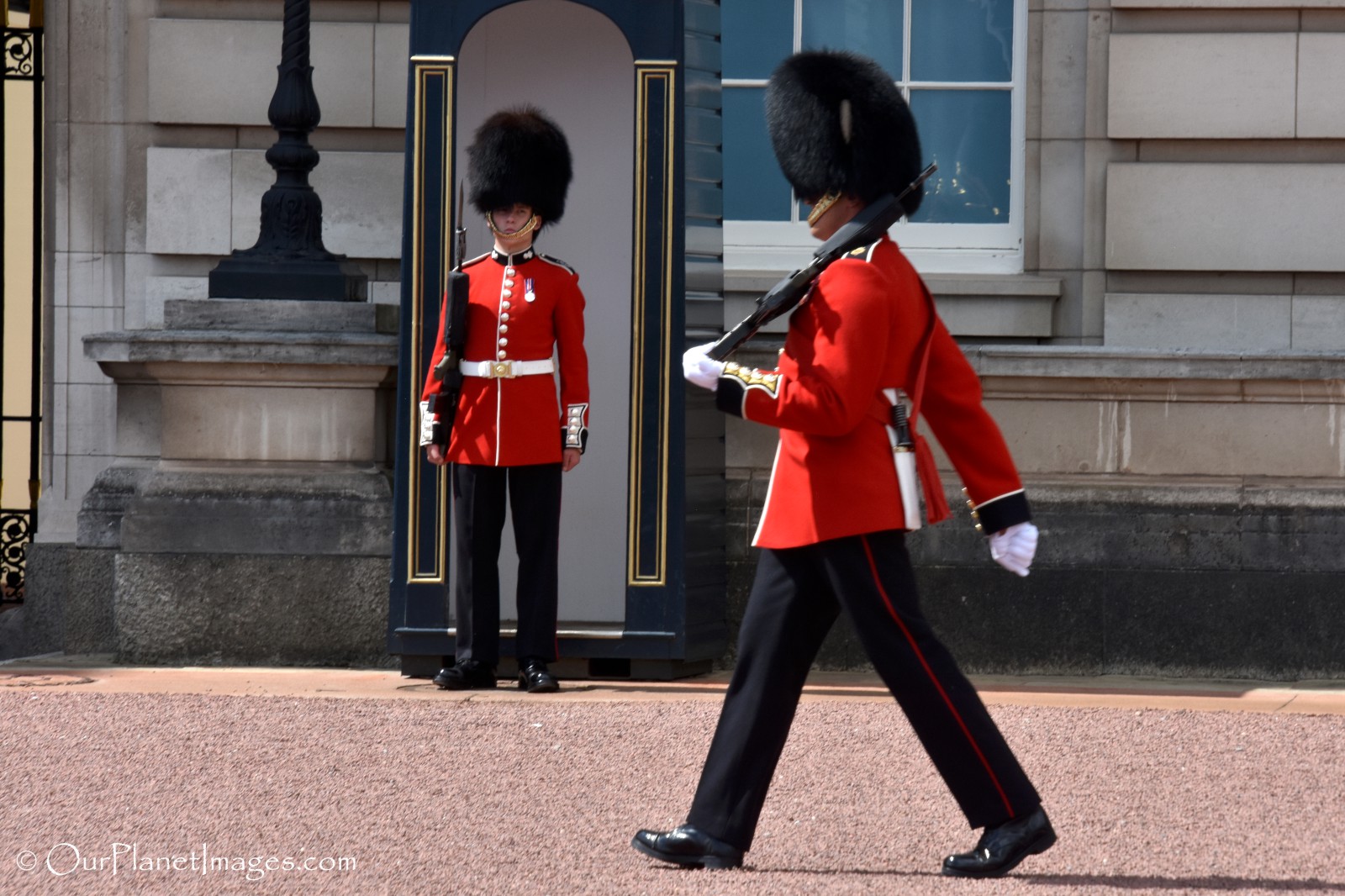
Coldstream Guards – Buttons on the tunic are in groups of two, their collar has a star-shaped badge on it and the plume in their hat is red.
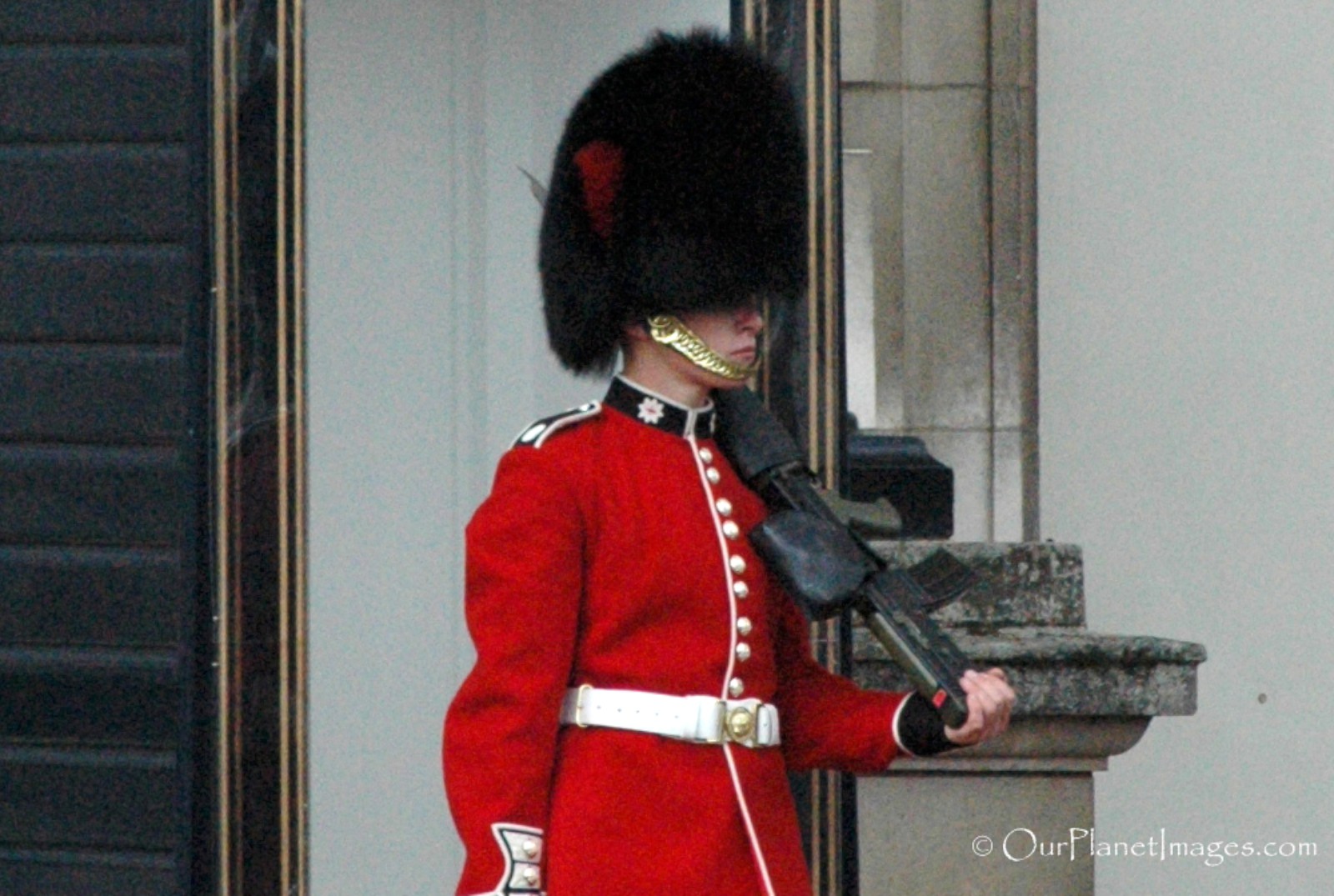
Scots Guards – Buttons on the tunic are in groups of three, their collar has a Scottish thistle on it and there is no plume in their hat.
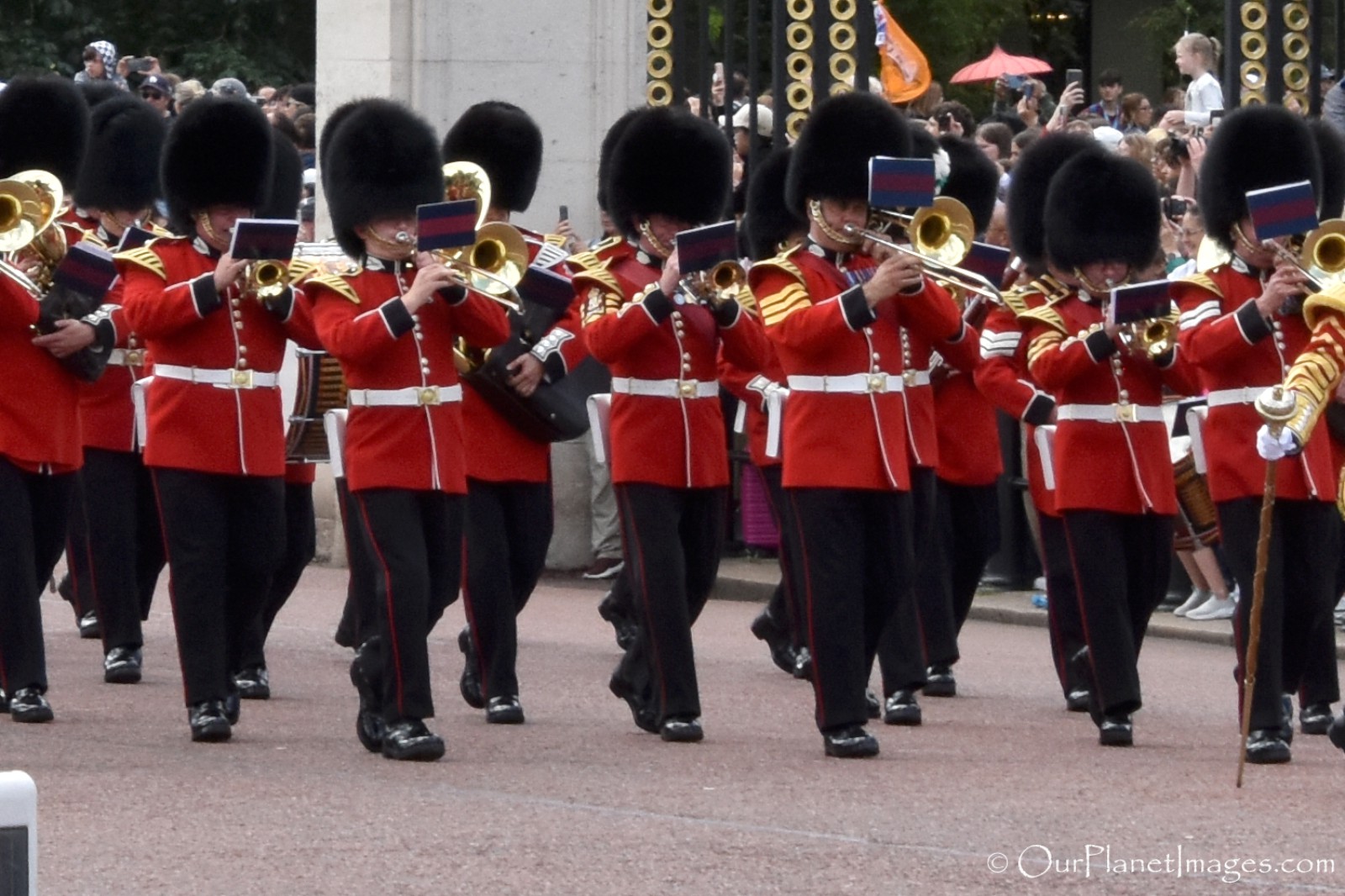
Irish Guards – Buttons on their tunic are in groups of four, their collar has a shamrock on it and the plume in their hat is blue.
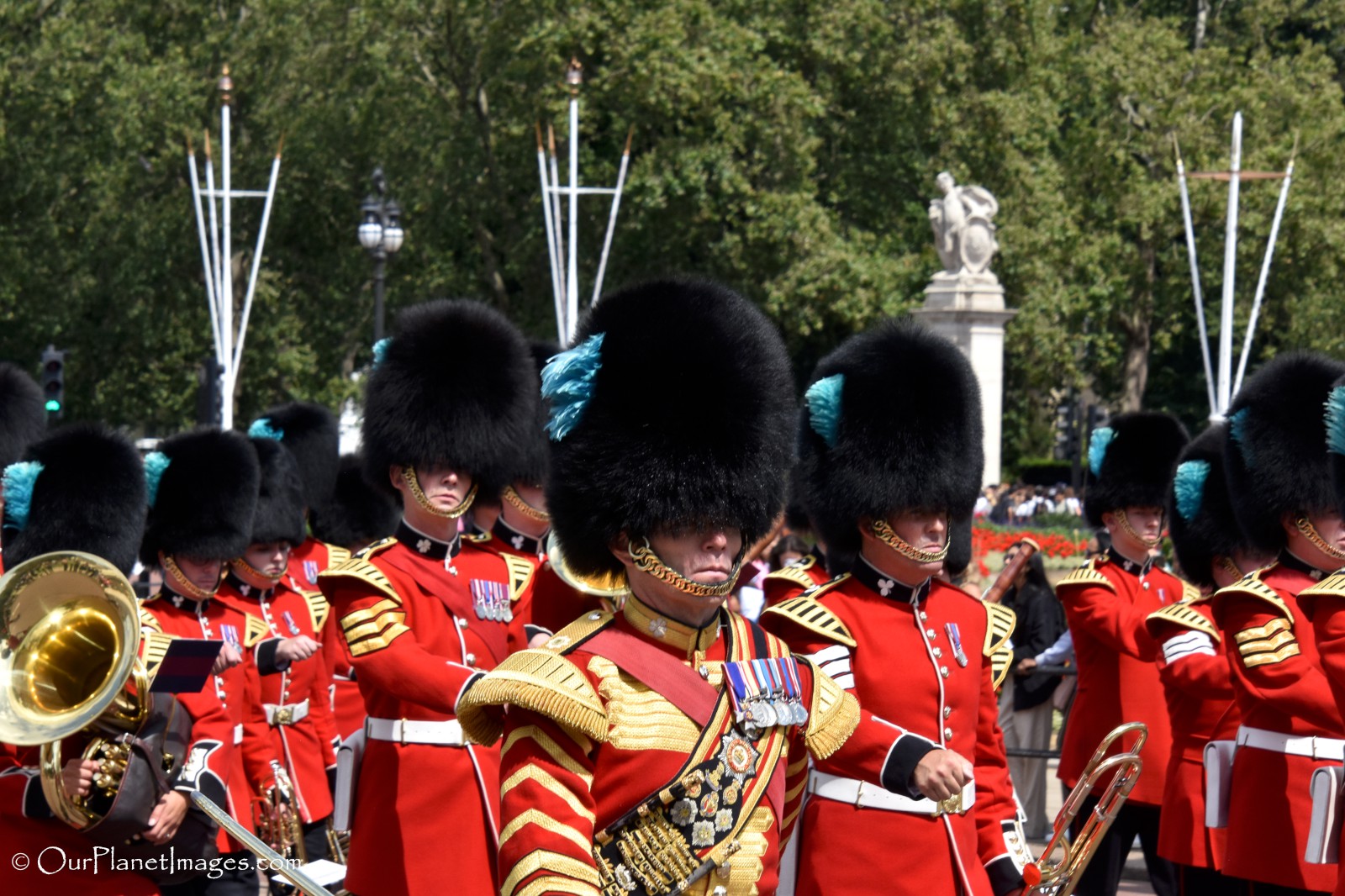
Welsh Guards – Buttons on their tunic are in groups of five, their collar has a leek on it and the plume in their hat is green and white.
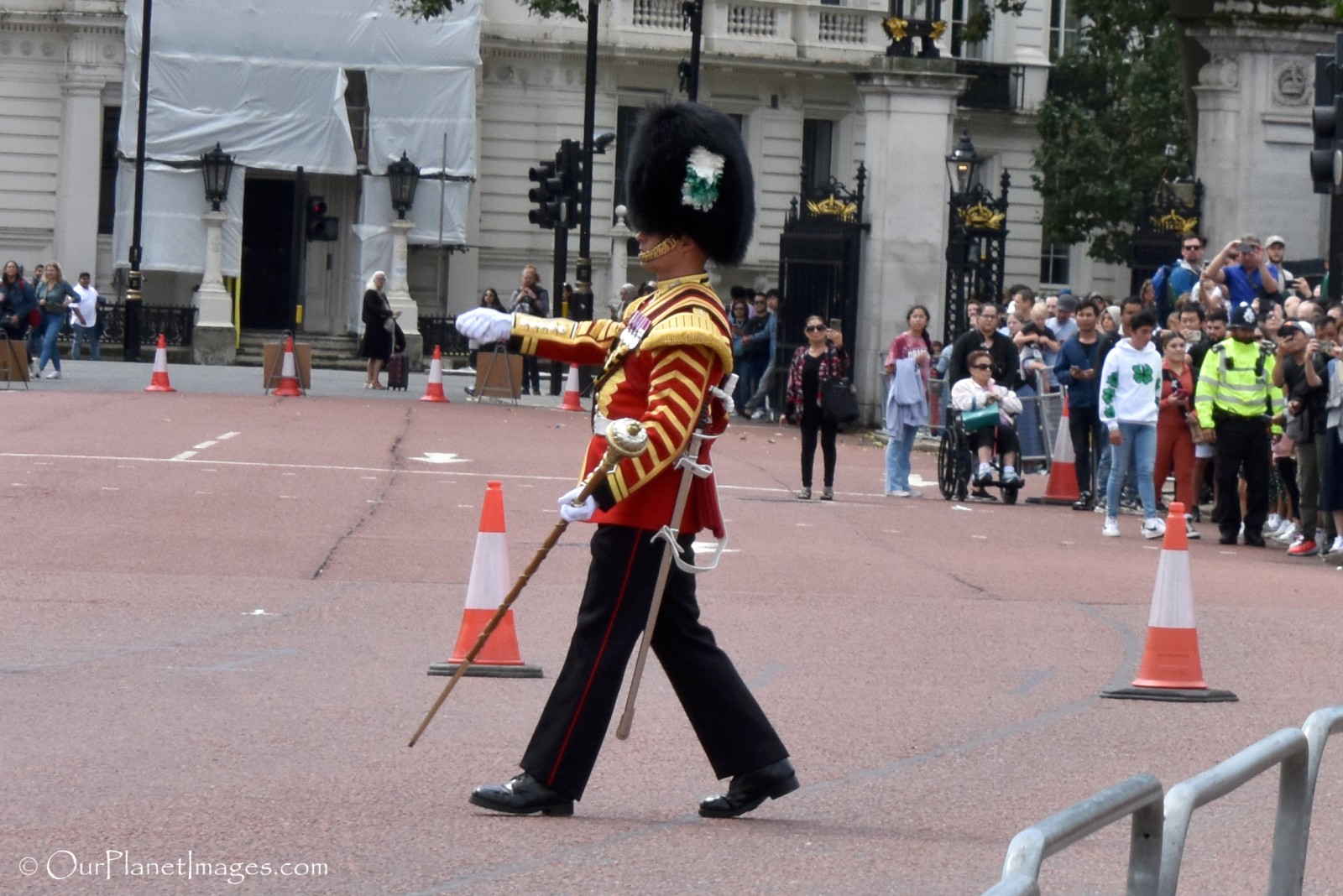
When to go
This event is free to attend and it takes place daily in June and July and on Mondays, Wednesdays, Fridays, and Sundays from August to May.
Officially, the Changing begins at 11:00, but parts of it actually start by 10:30, with the whole ceremony taking approximately 1 hour.
Where is the best place to watch the changing of the guards?
The important thing to remember is that the ceremony takes place in three separate locations and there is a parade that connects the three locations. Therefore, there is nowhere to watch the entire ceremony.
The real decision is which part of the ceremony is best for you. The two most popular locations are standing outside the gate of Buckingham Palace to watch the pageantry during the process of swapping out the old guards with the new guards and standing near the Victoria Memorial to watch the parade of the guards entering and leaving Buckingham Palace.
The Dust on My Shoes
Anyone that has been following my blog knows that I enjoy watching the changing of the guard ceremonies at the various locations around the world. Experiencing the Changing of the guard ceremony at Buckingham Palace is an event that every visitor to London should do even if watching changing of the guard ceremonies is not your thing. It is a military function but it is also one of the easiest ways to see an event that is dedicated to the British Royalty.
Choose the part of the ceremony that you watch wisely. The ceremony lasts for approximately an hour and if you choose to watch the swapping out of the old guards with the new guards then you will be stuck in the crowd until that portion of the ceremony is complete. The other locations are easier to come and go more freely.
It is easy to include watching the ceremony as part of you itinerary because it is located near several other major tourist sites.
Changing of the guard ceremonies are not a primary function in my travel plans but they are an event that can enhance the experience of visiting any city. They are easy to squeeze into a day of visiting other sites and they are usually near places that are at the top of travel agenda.
